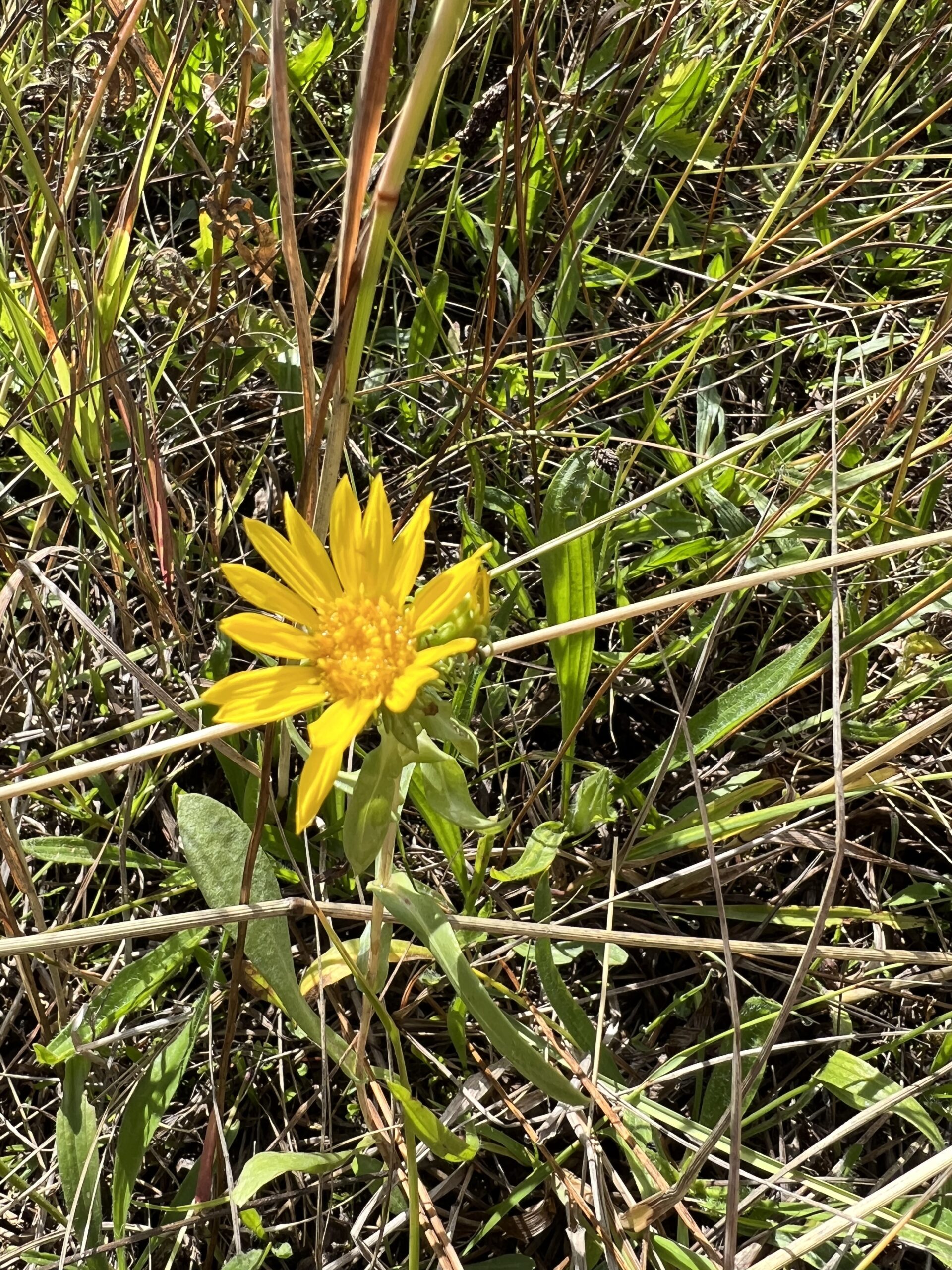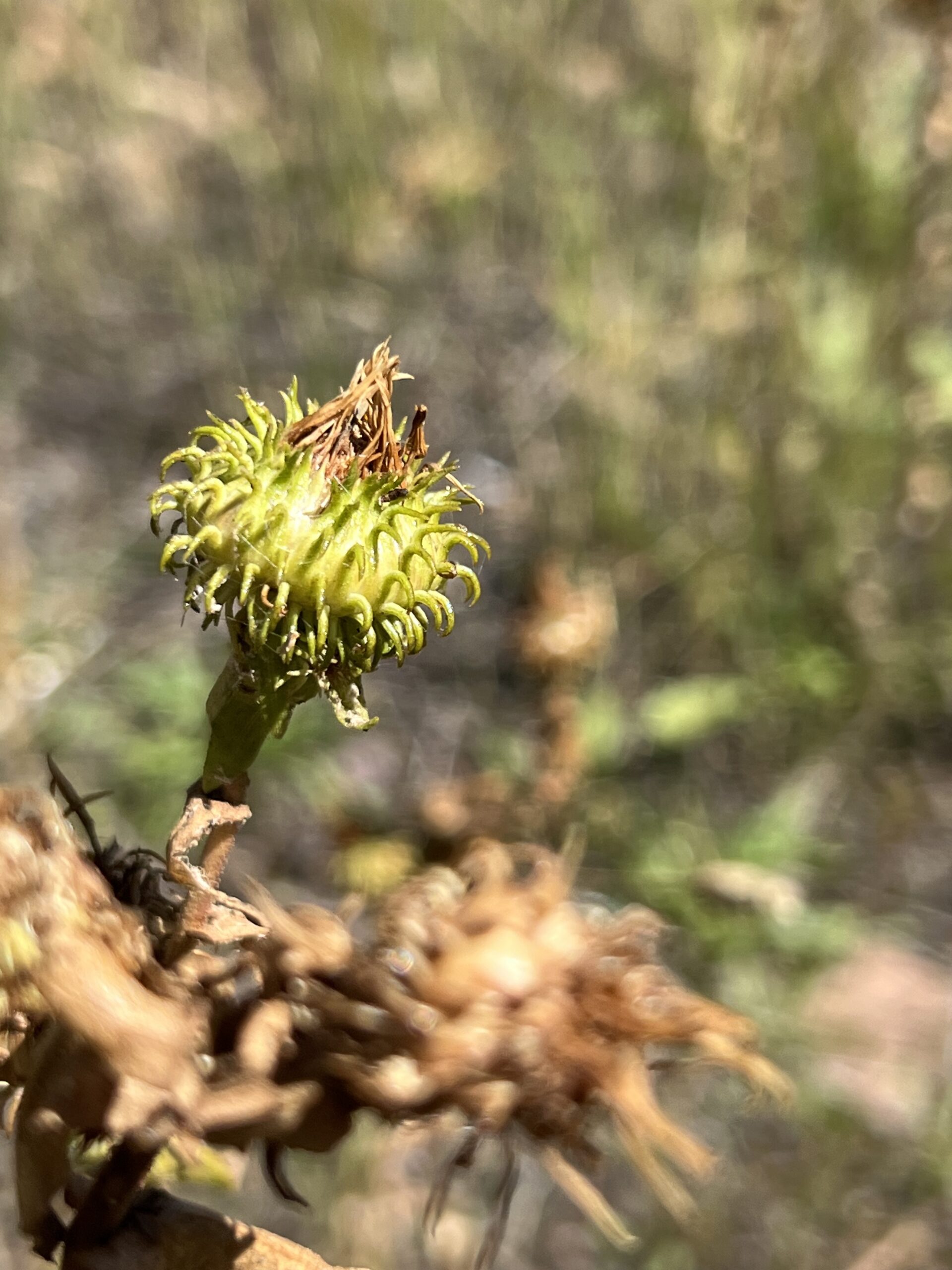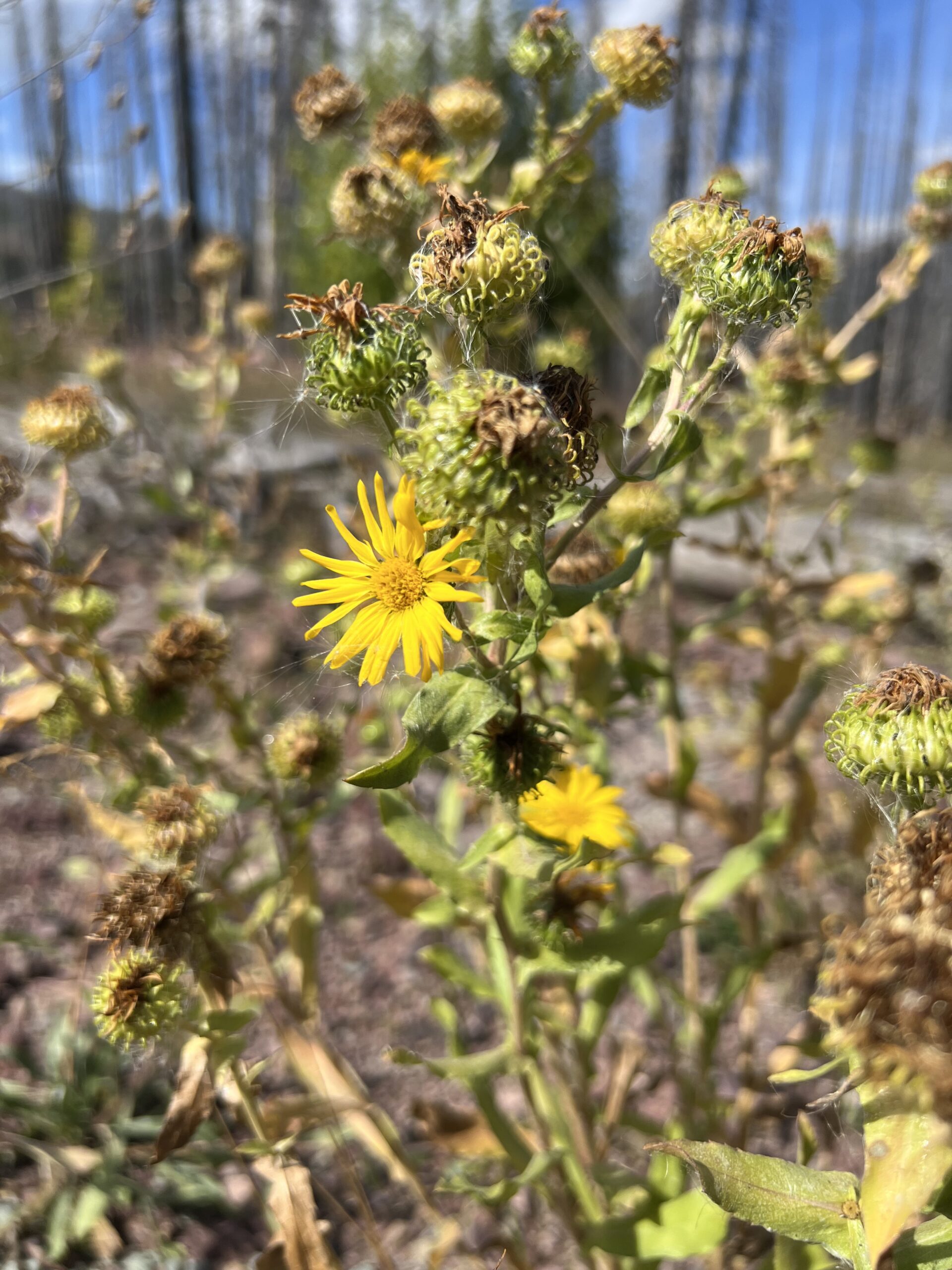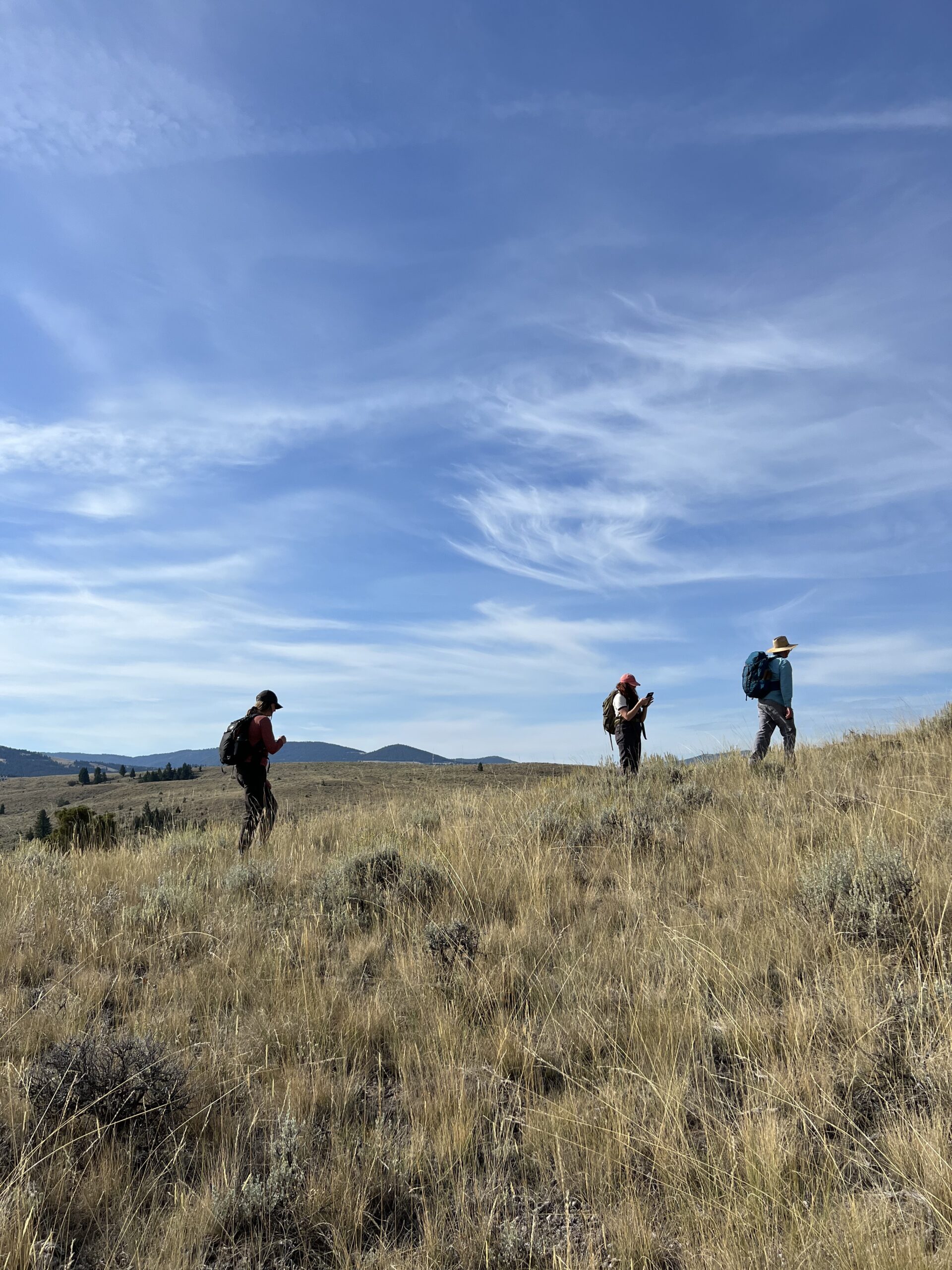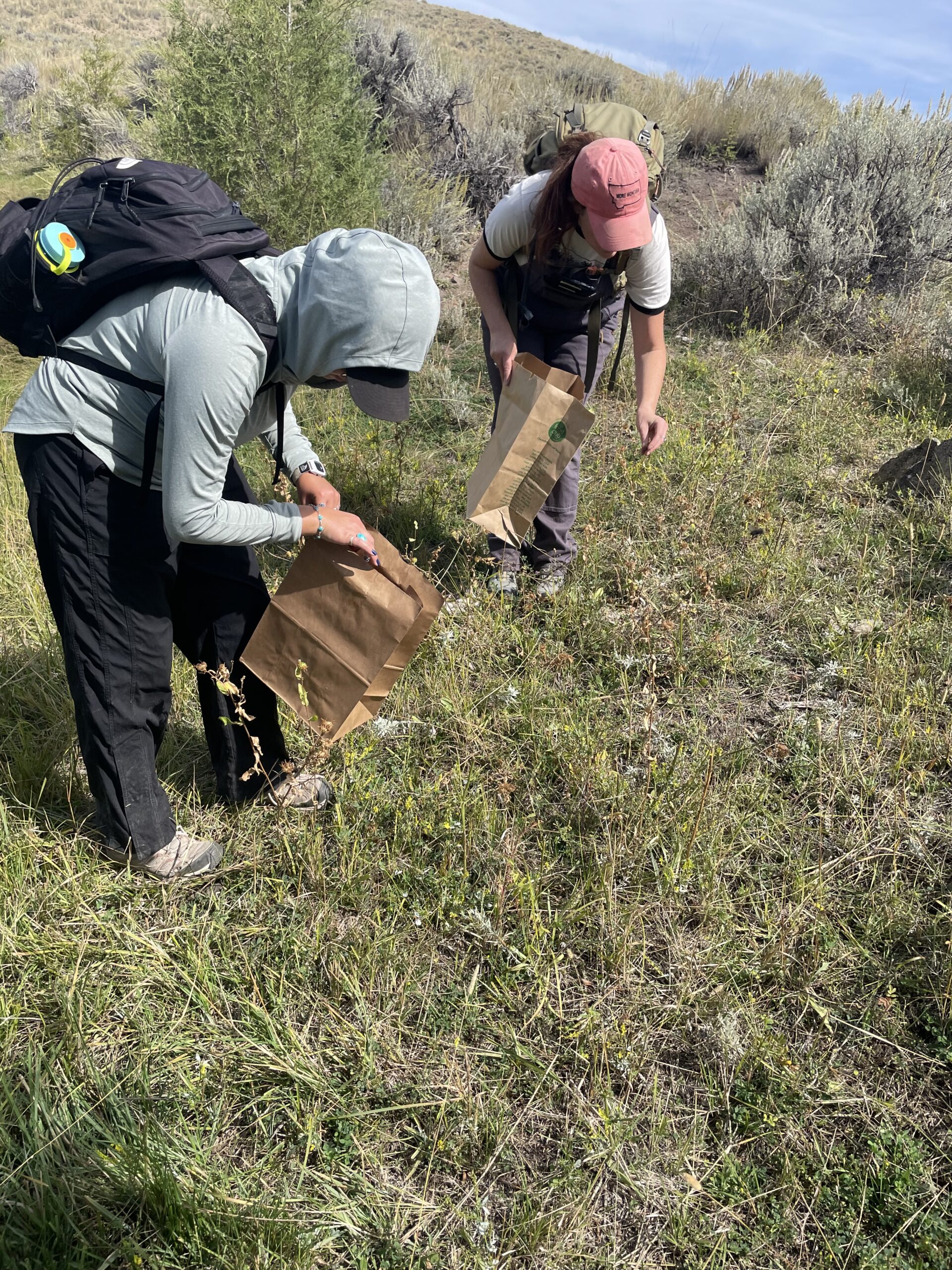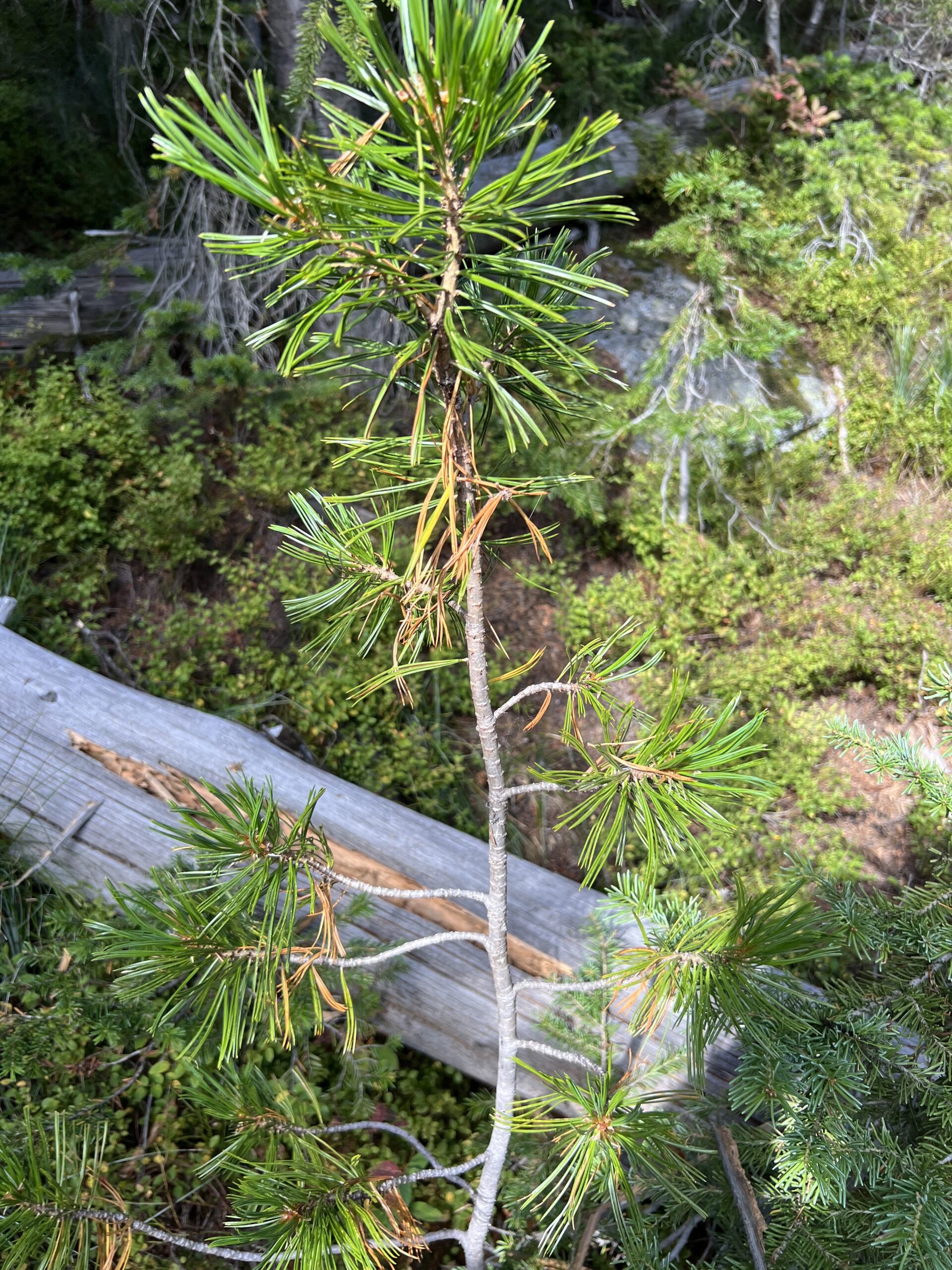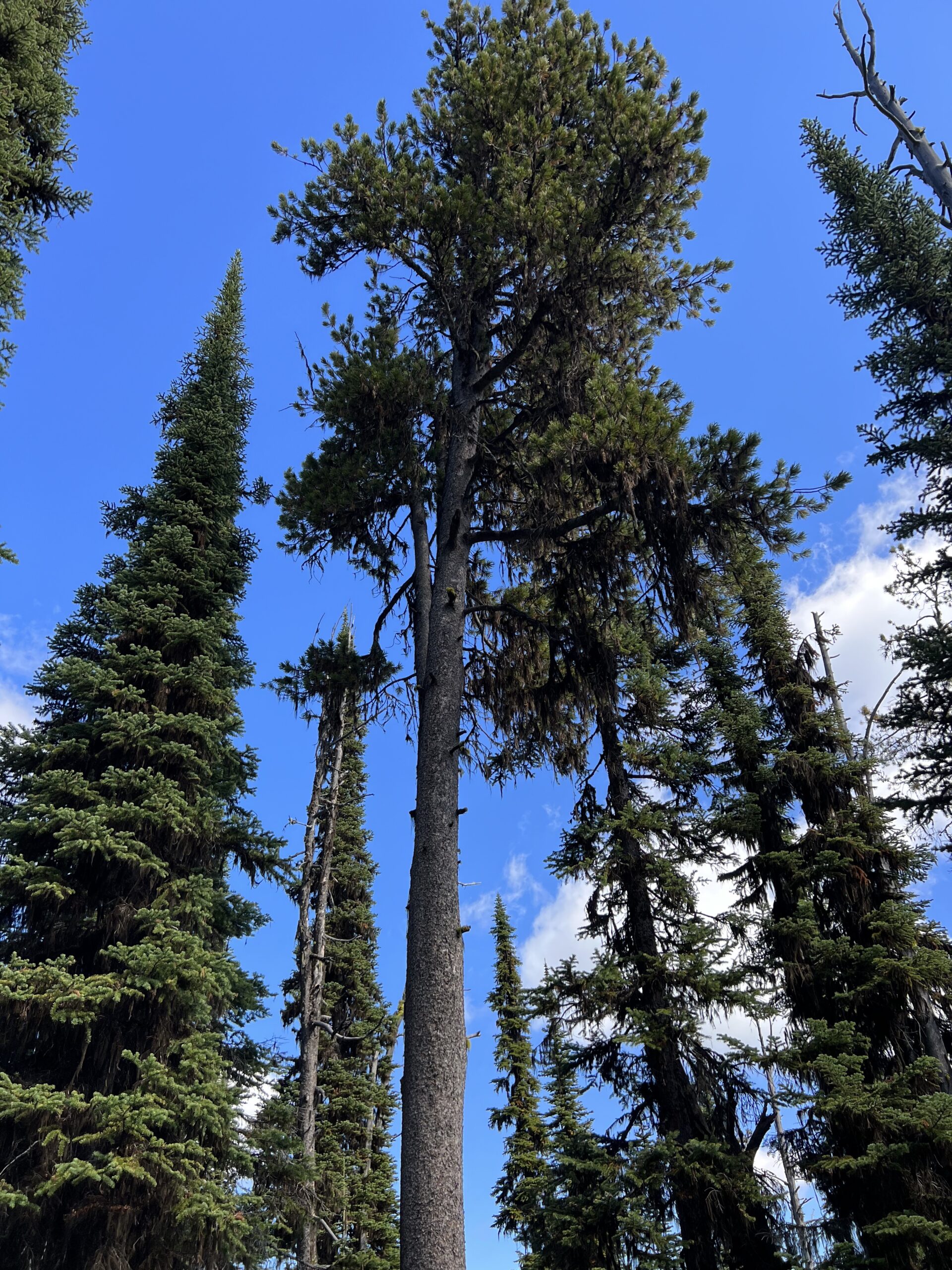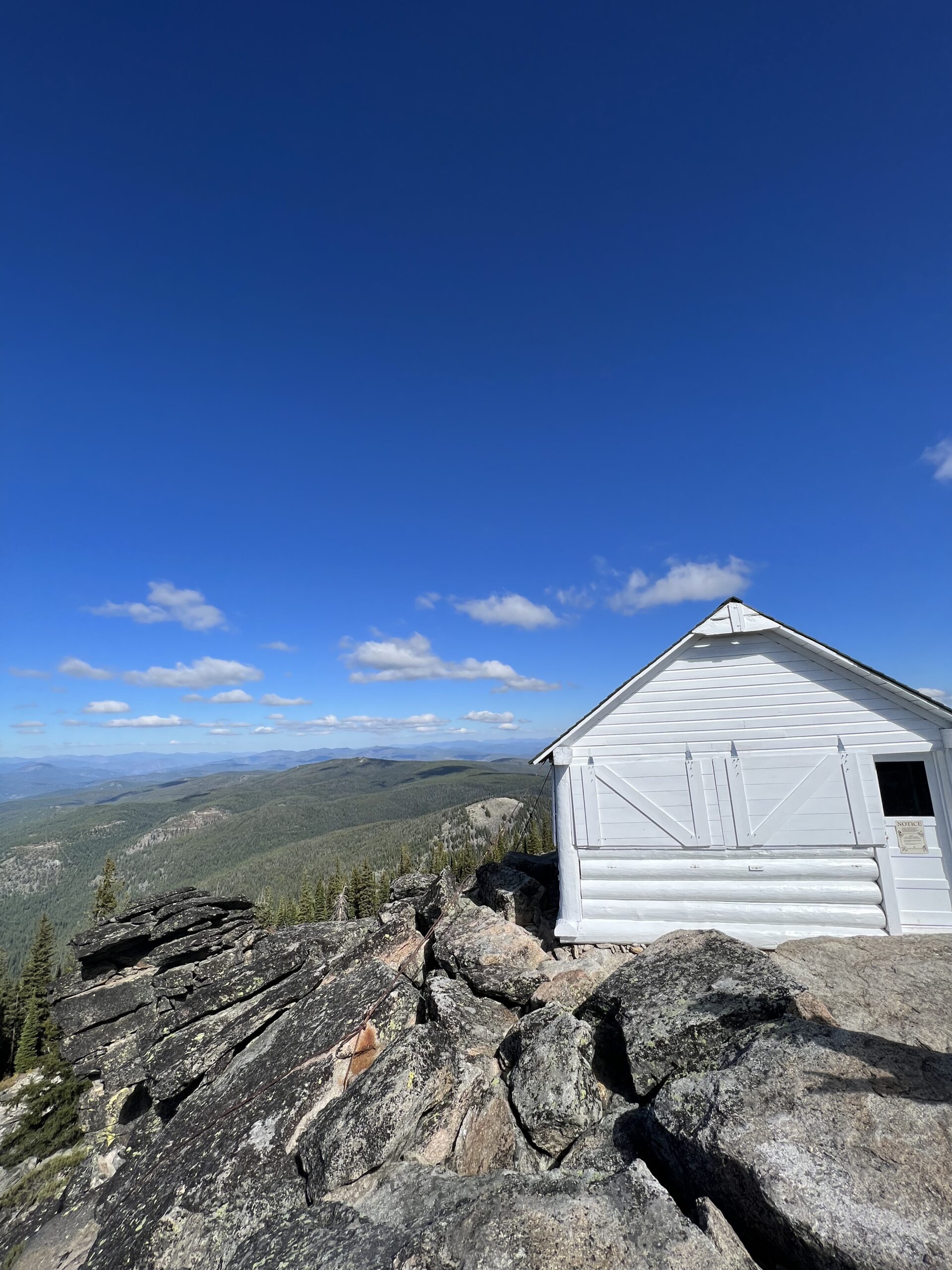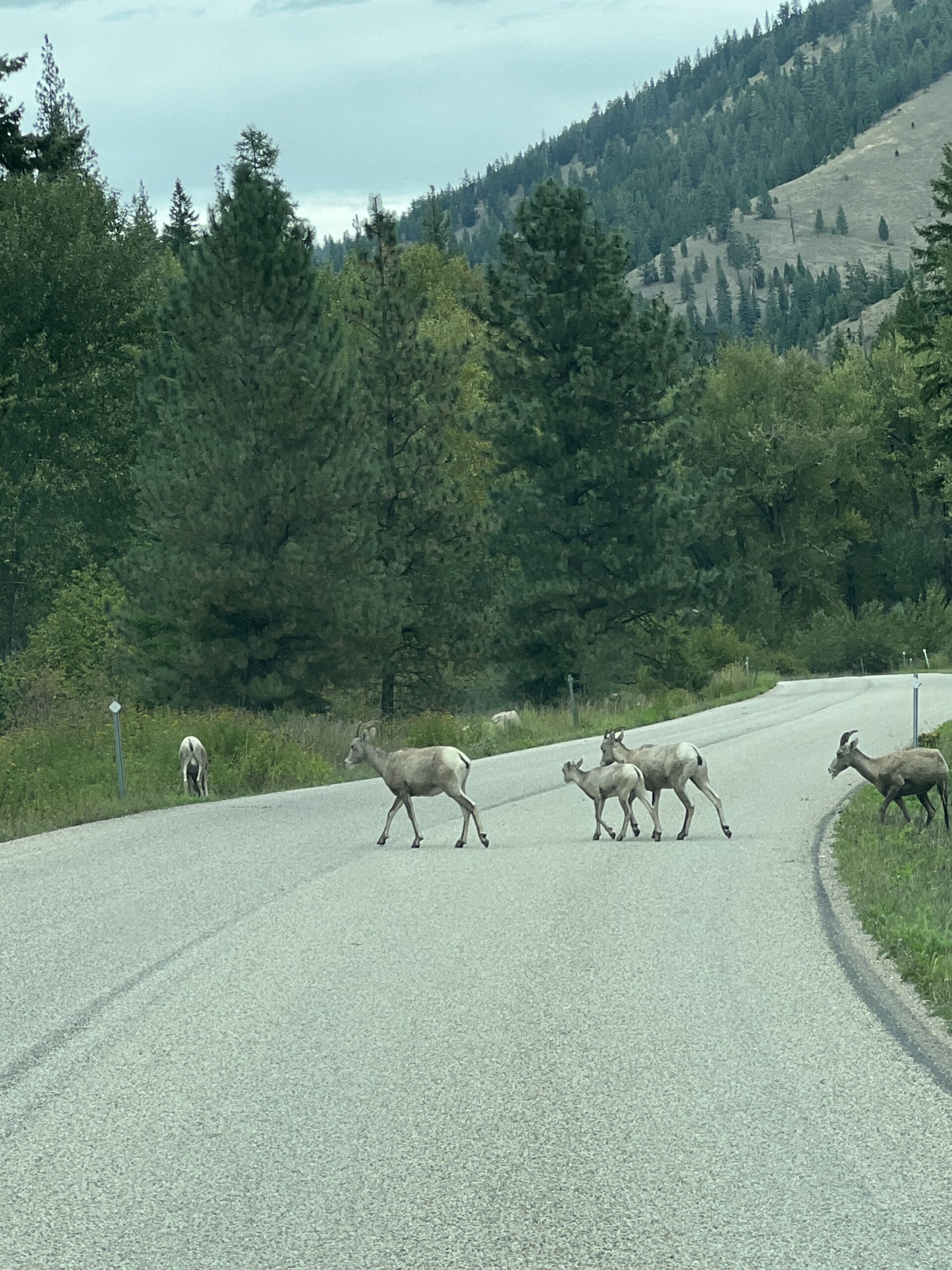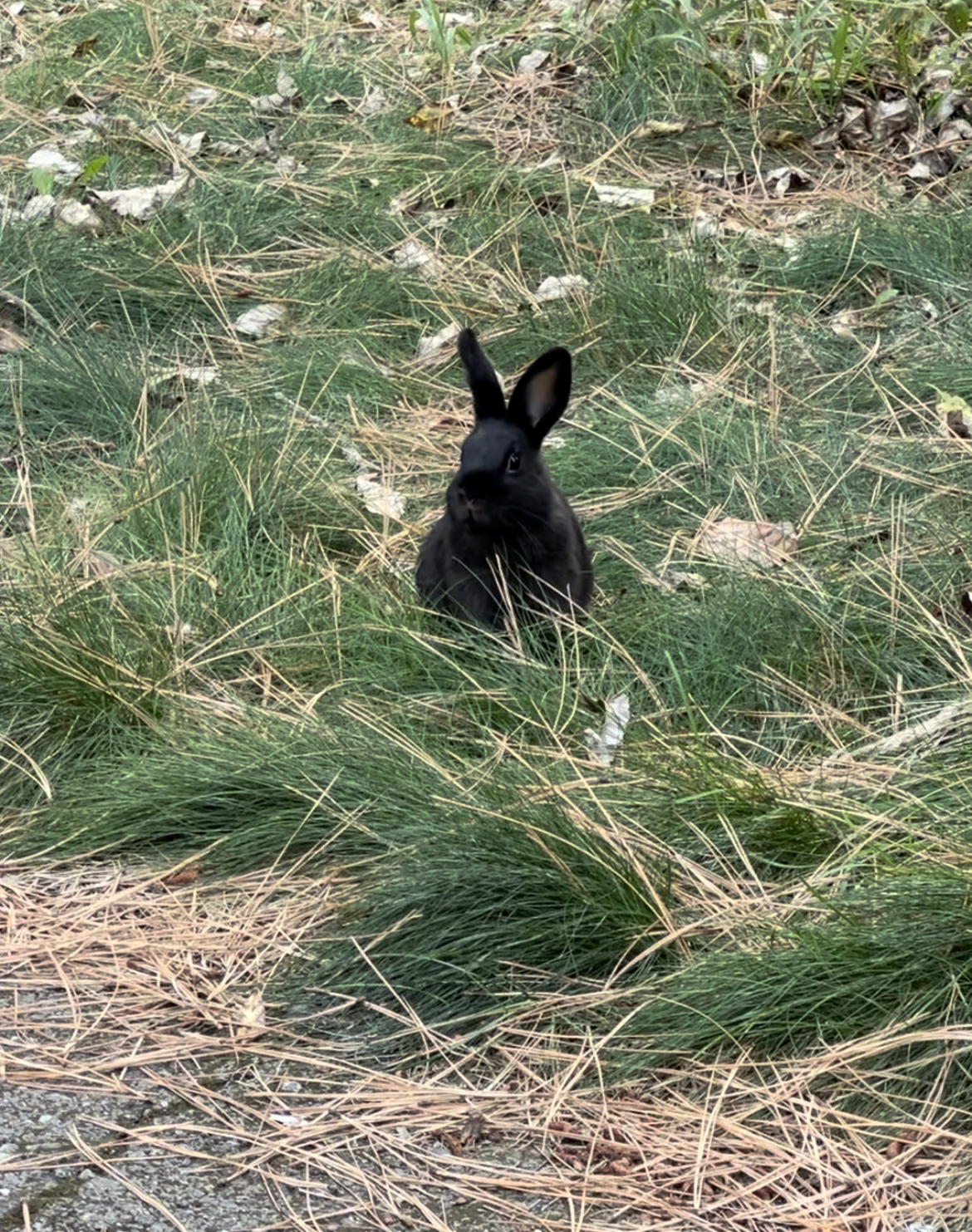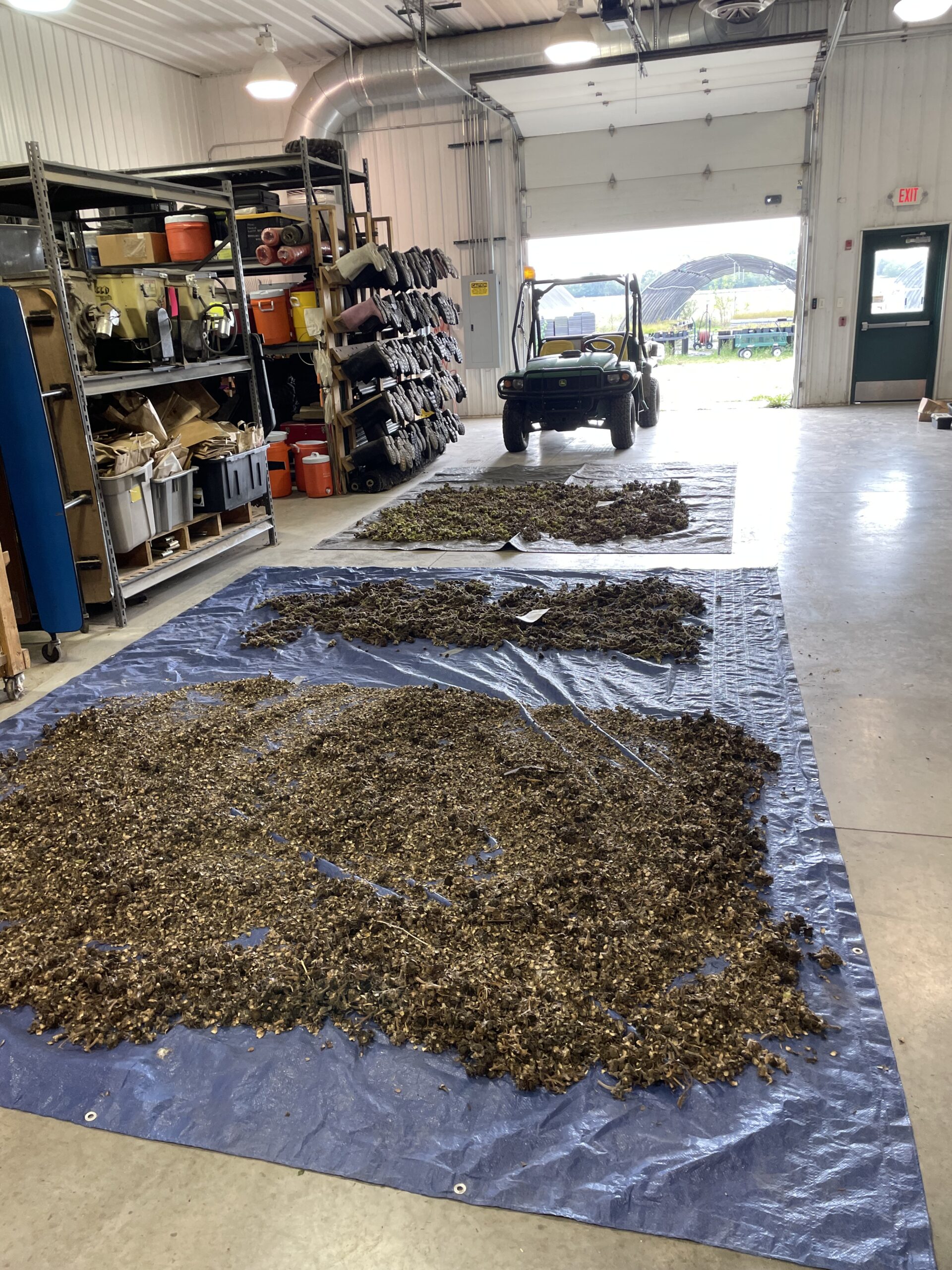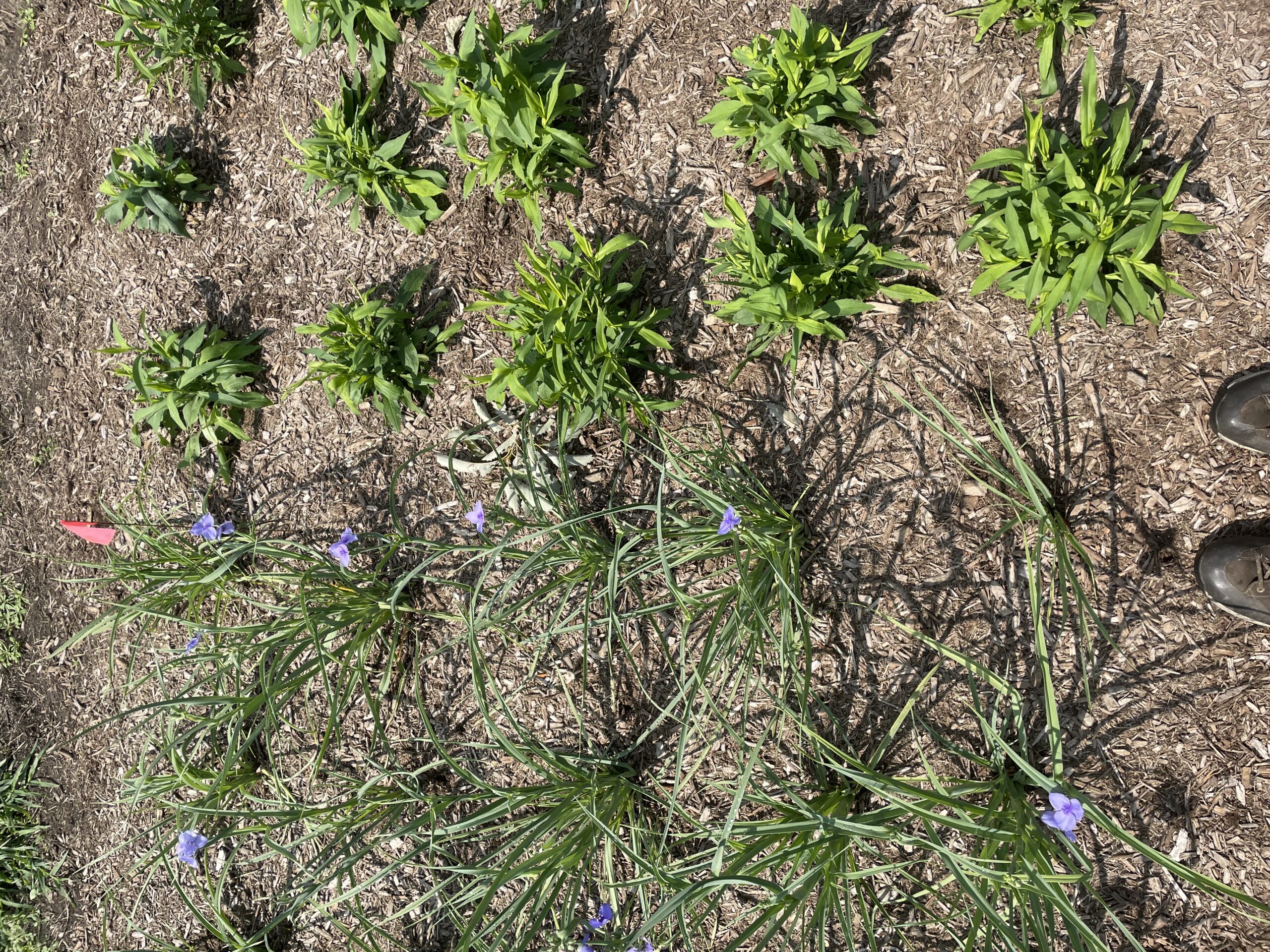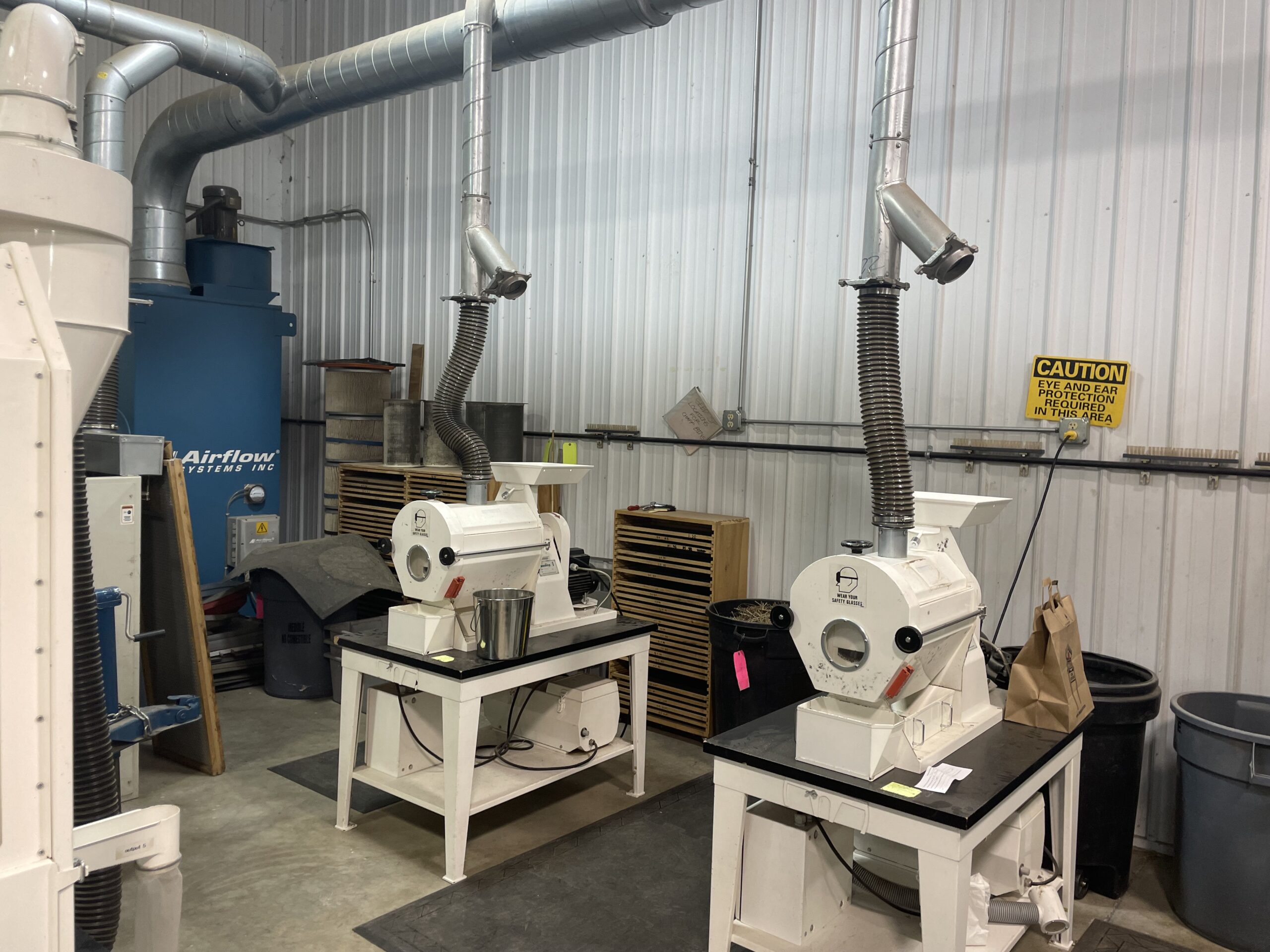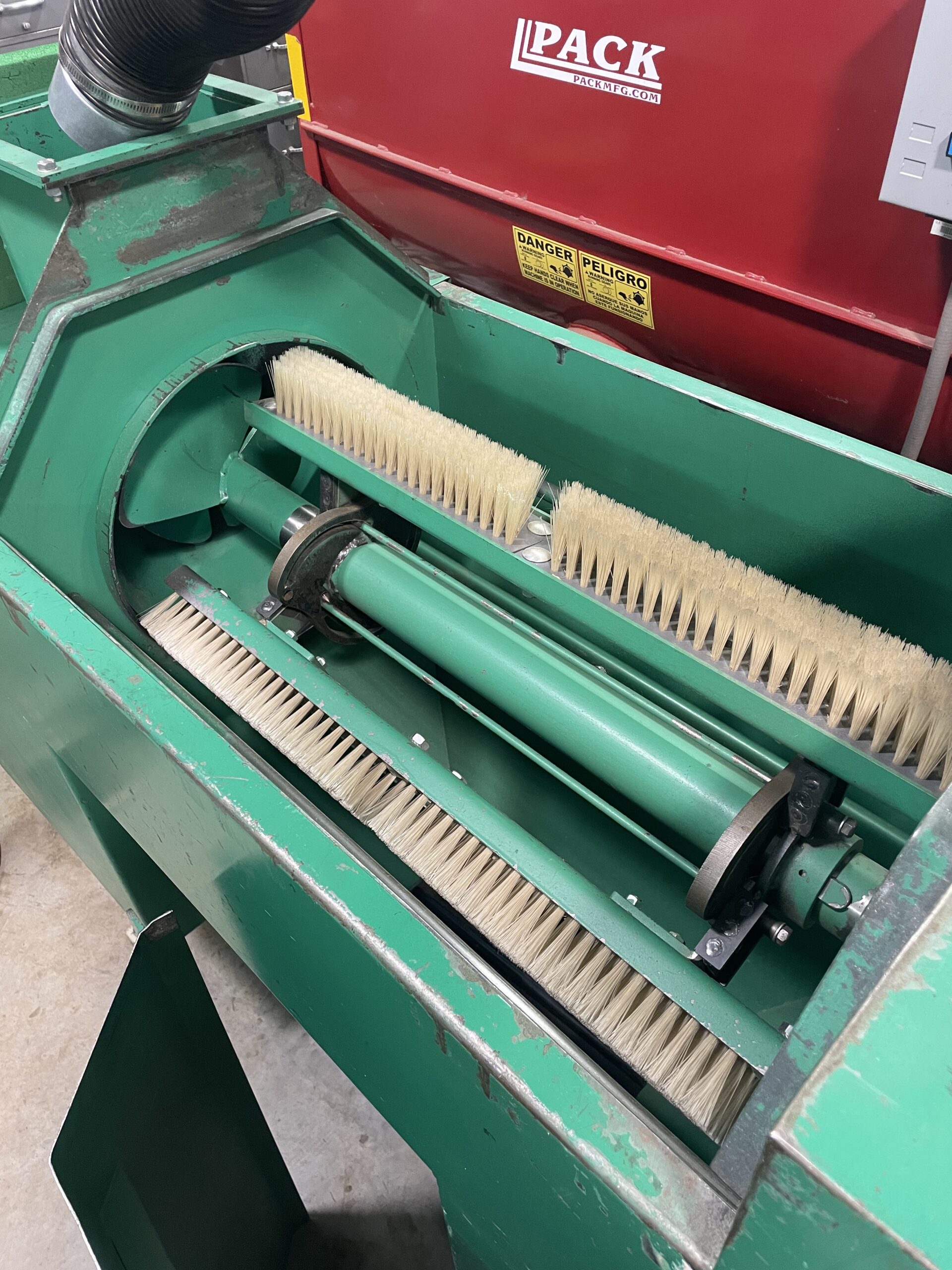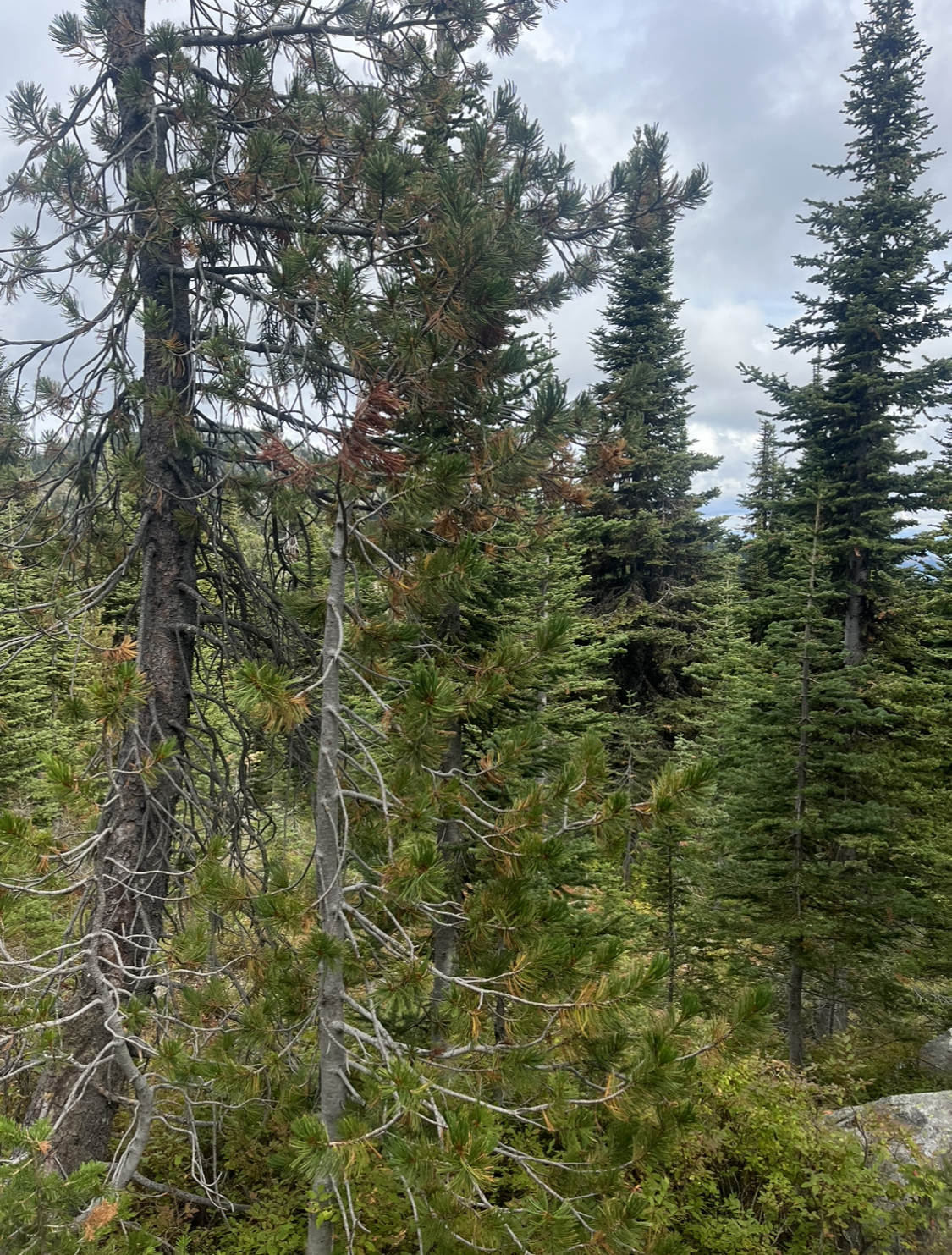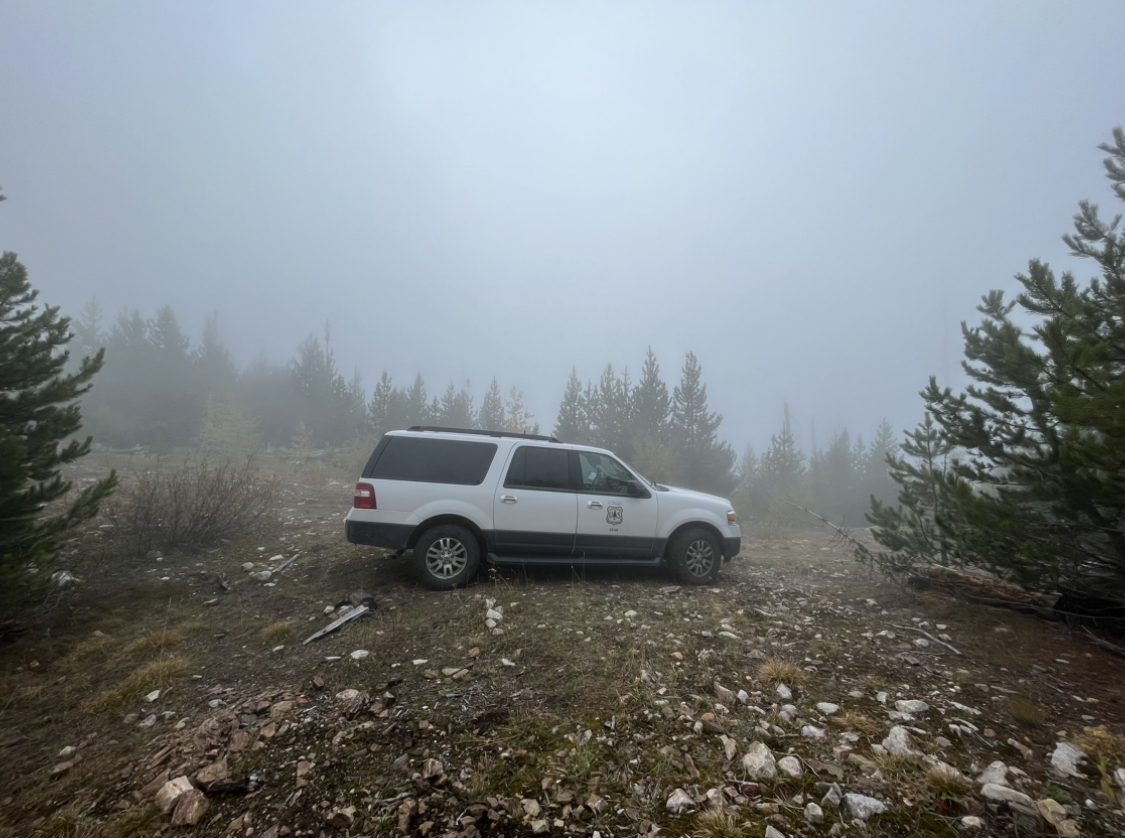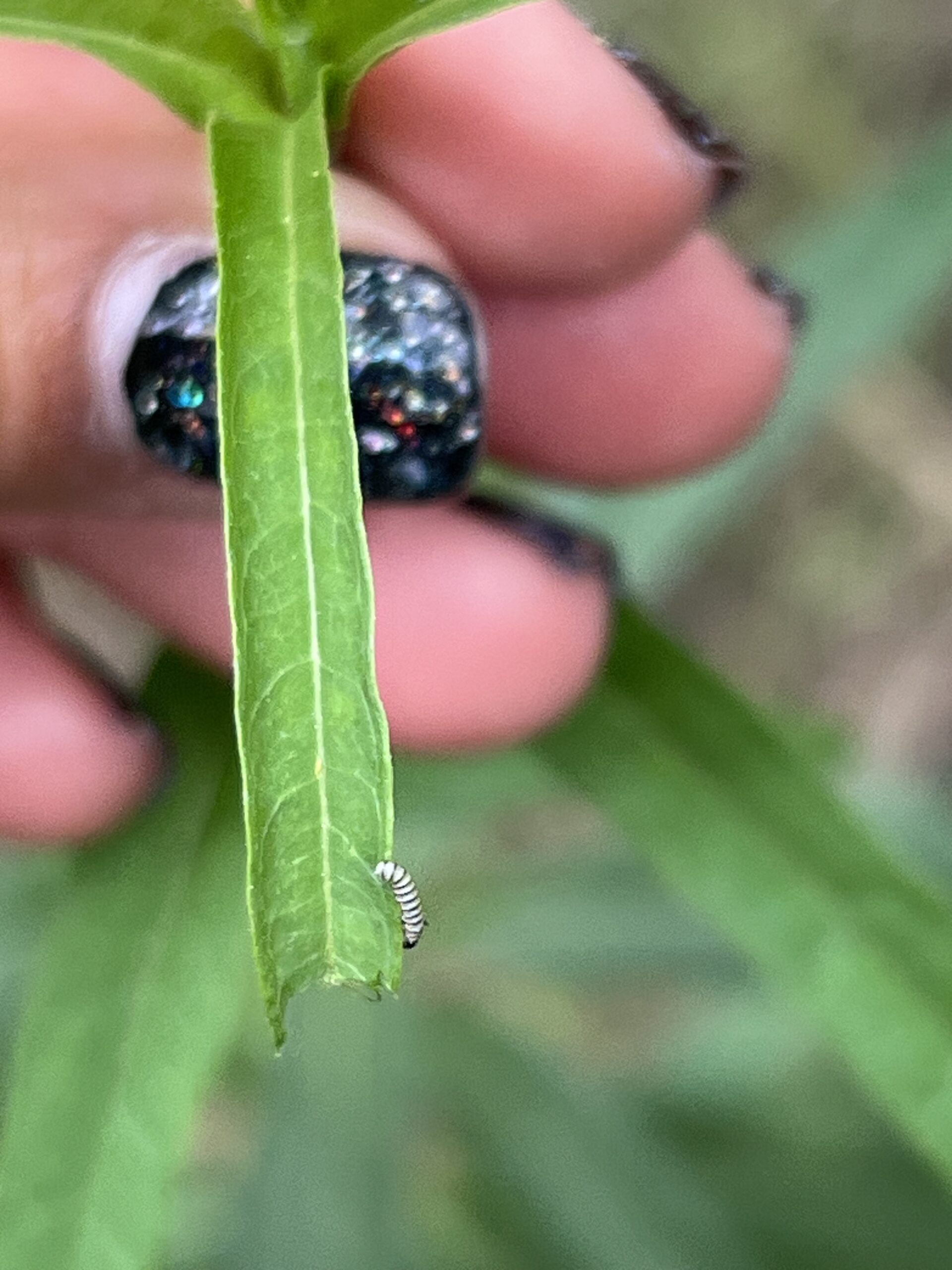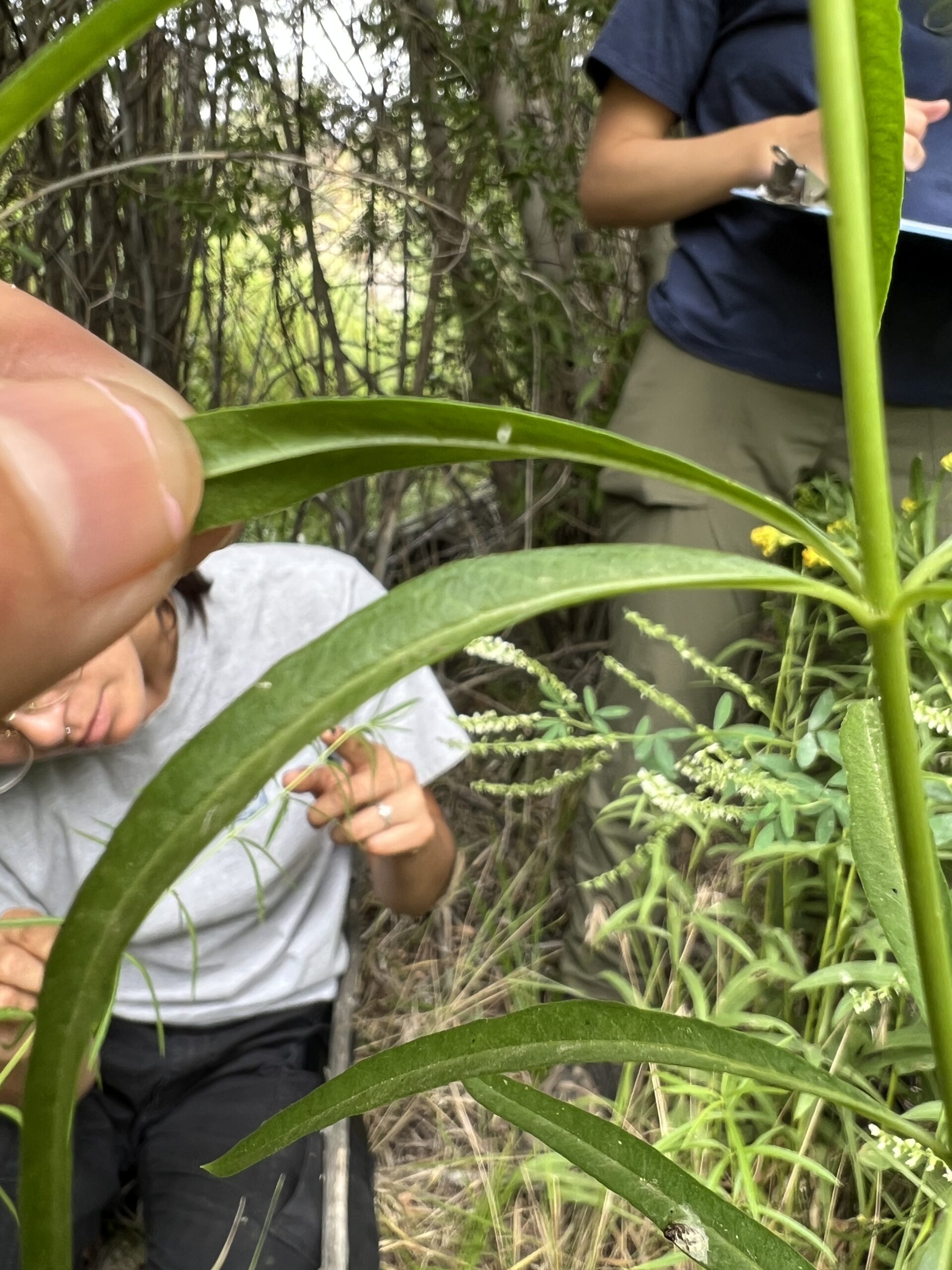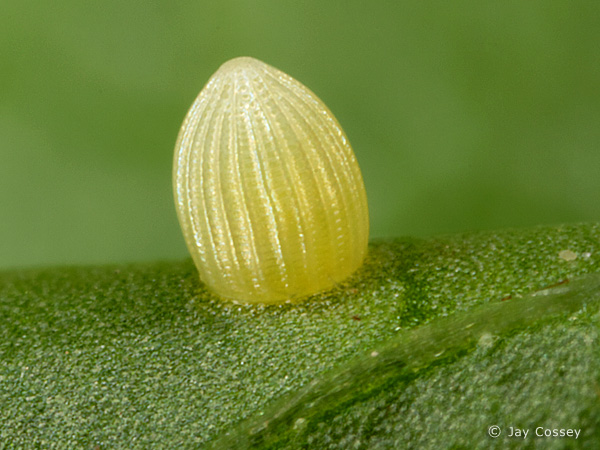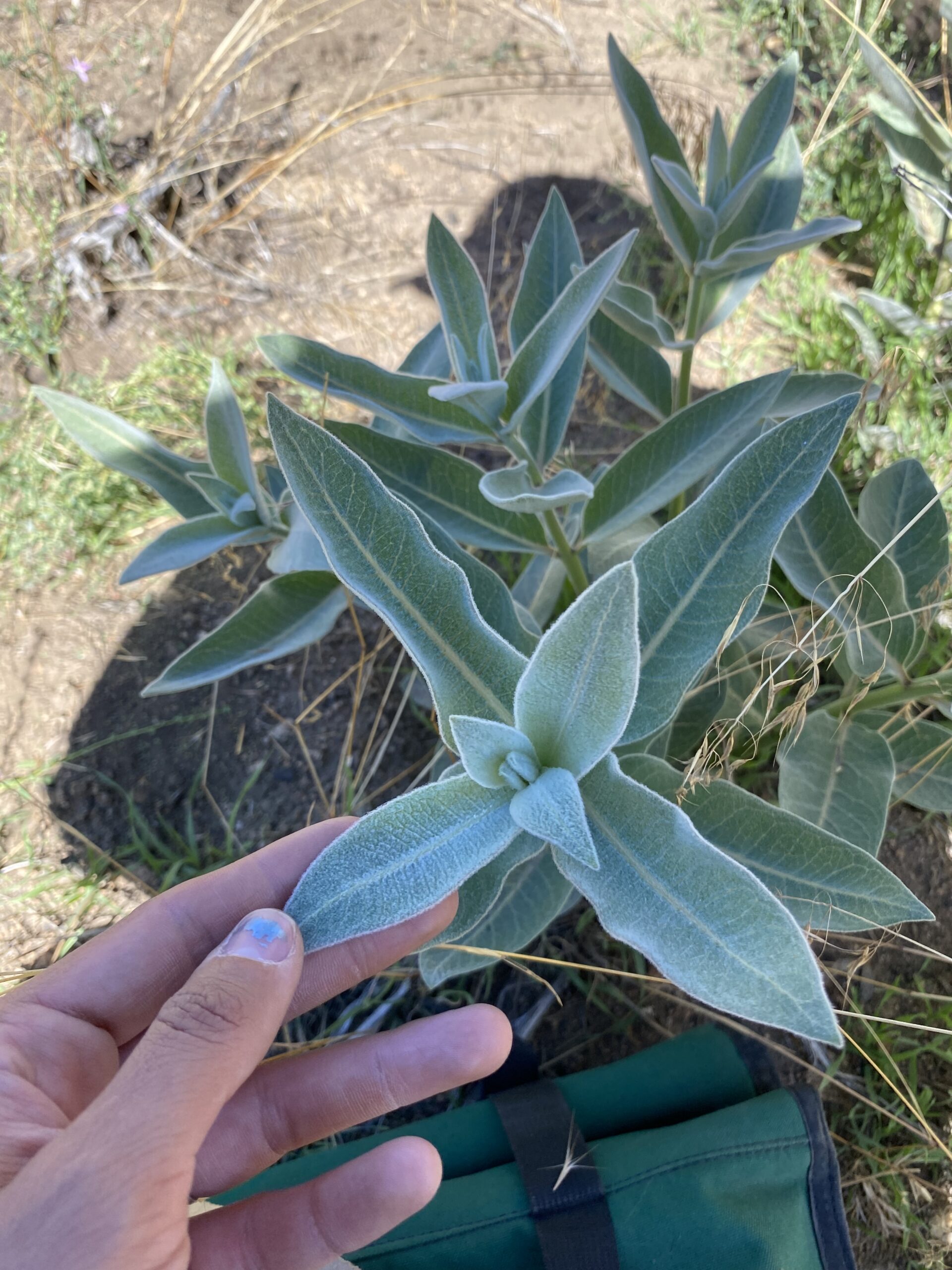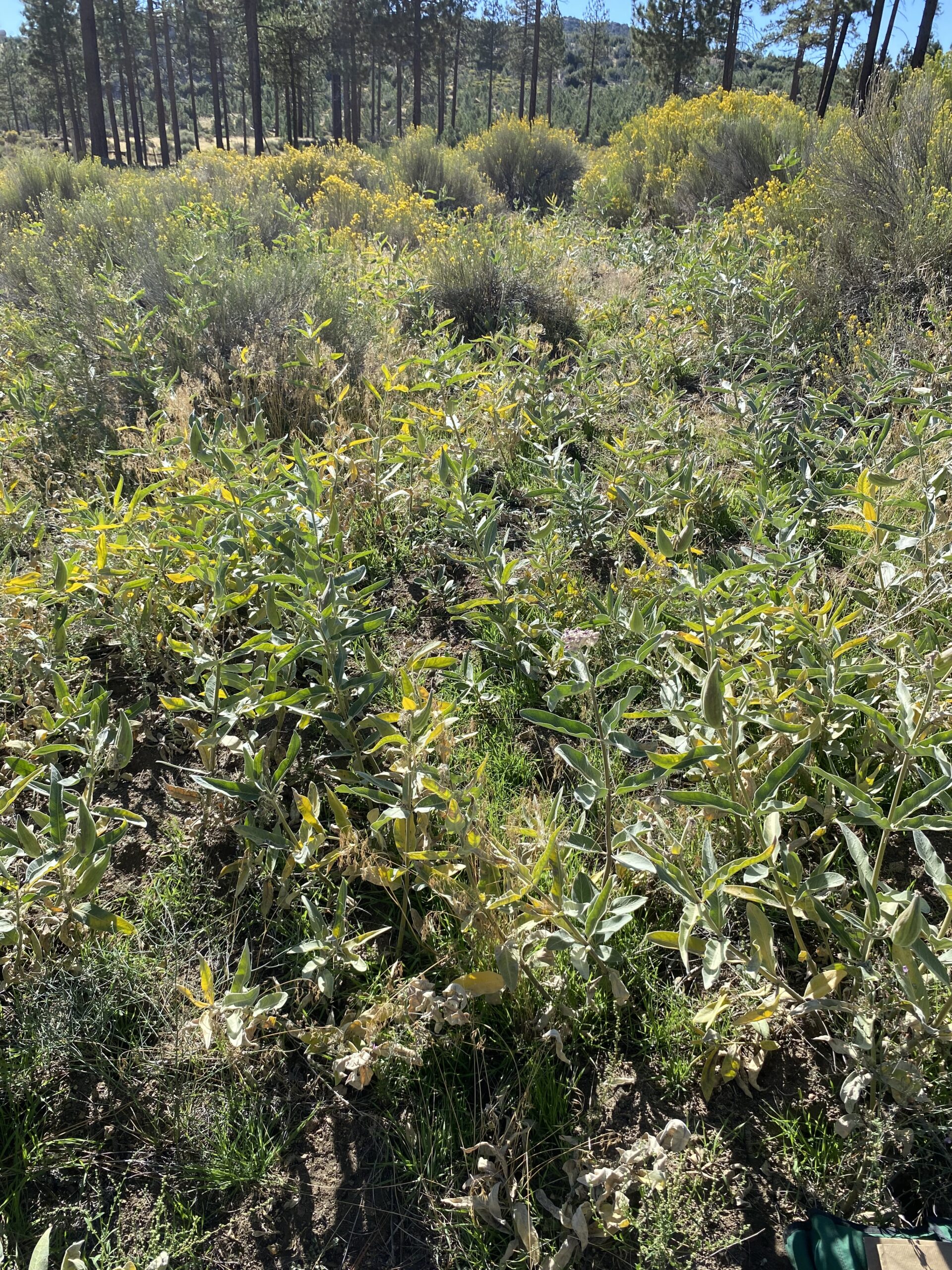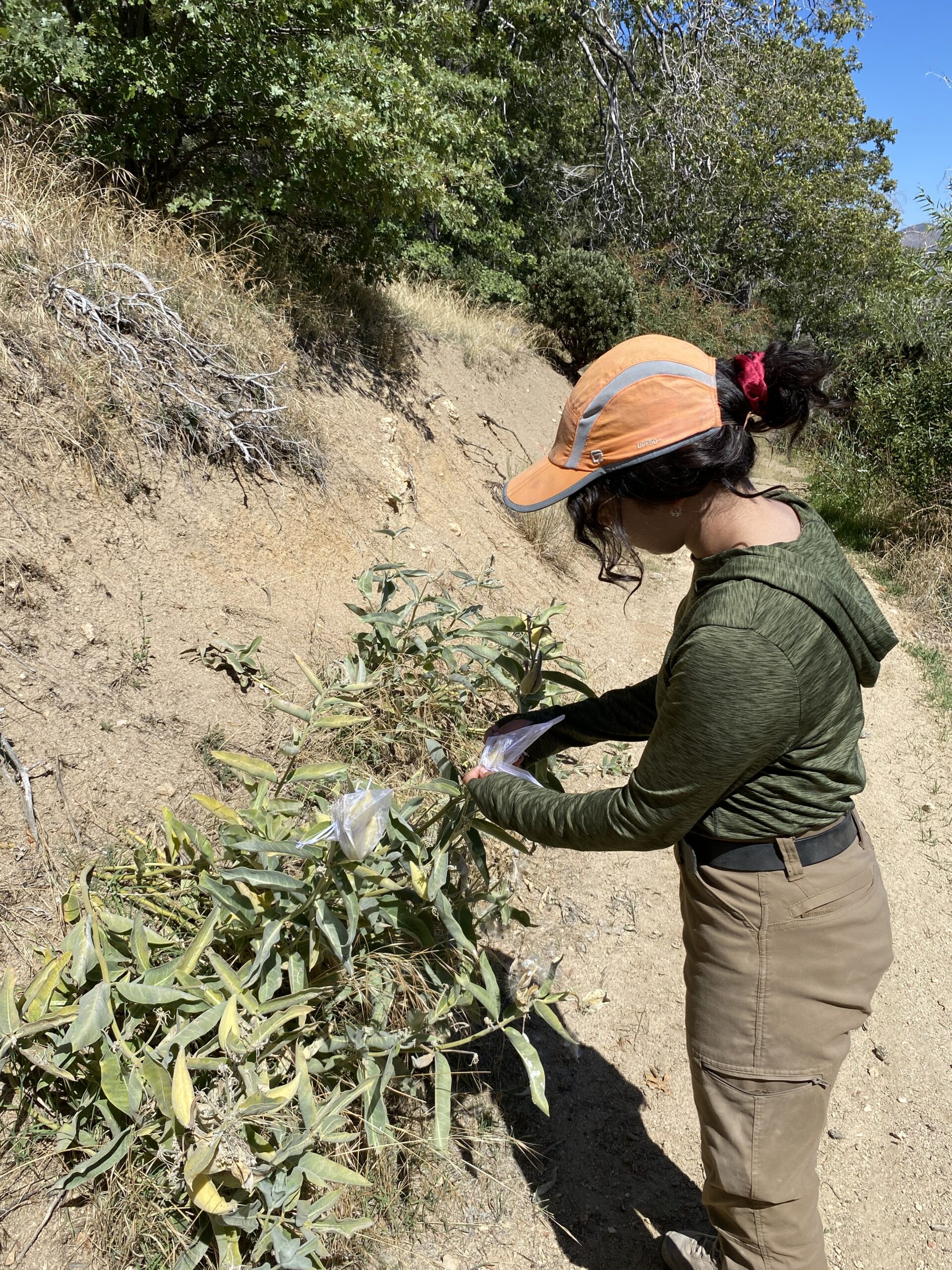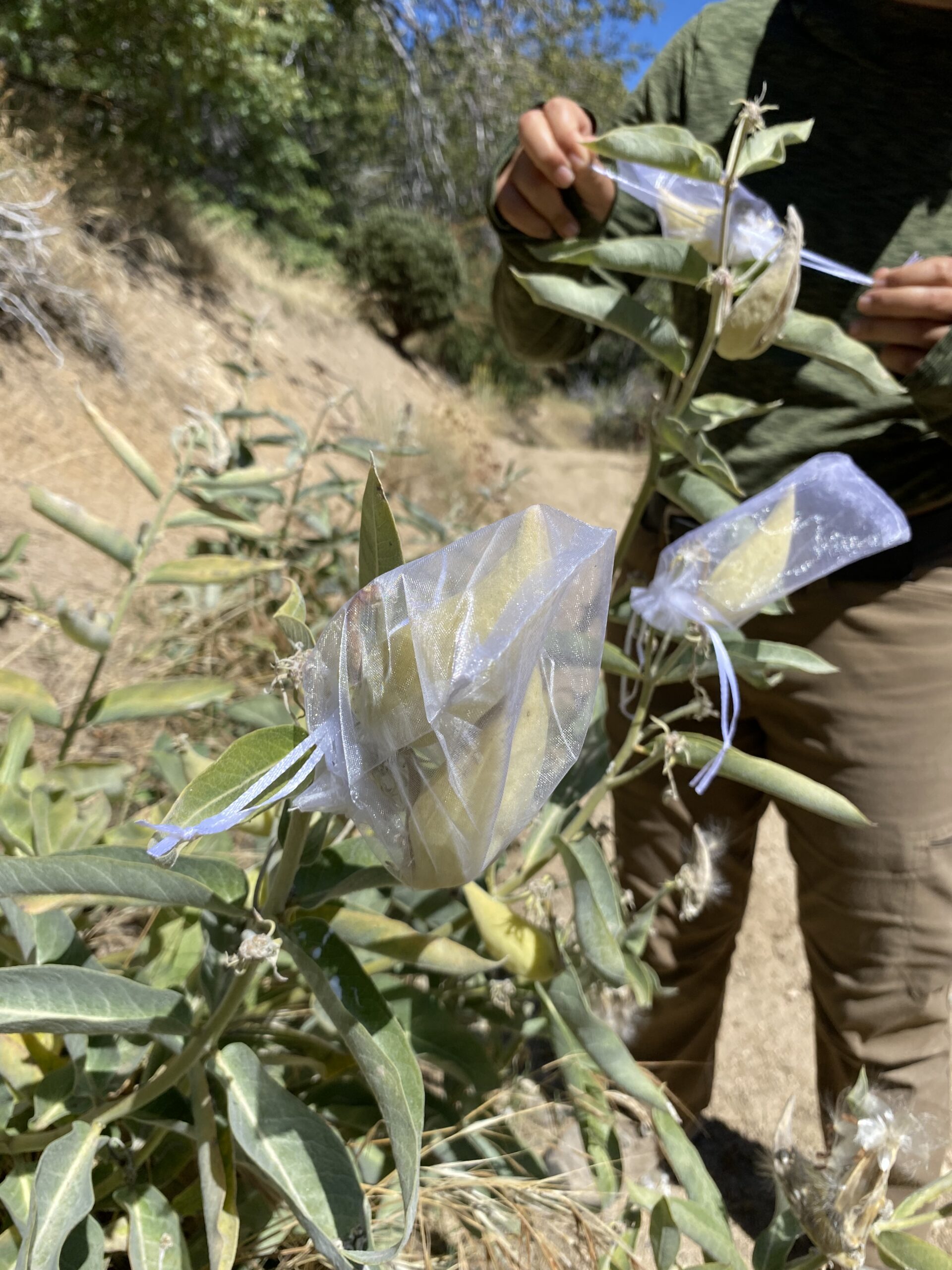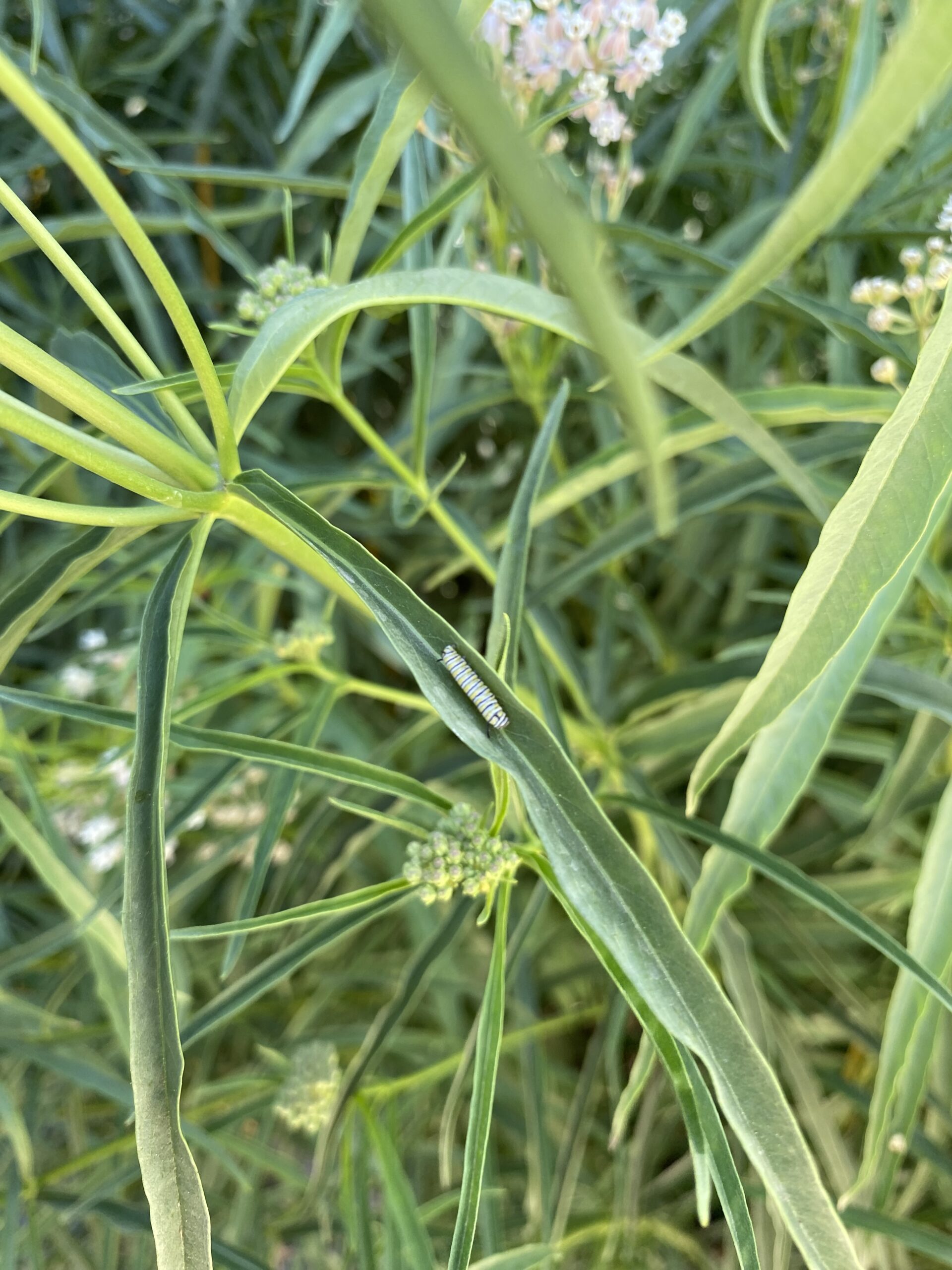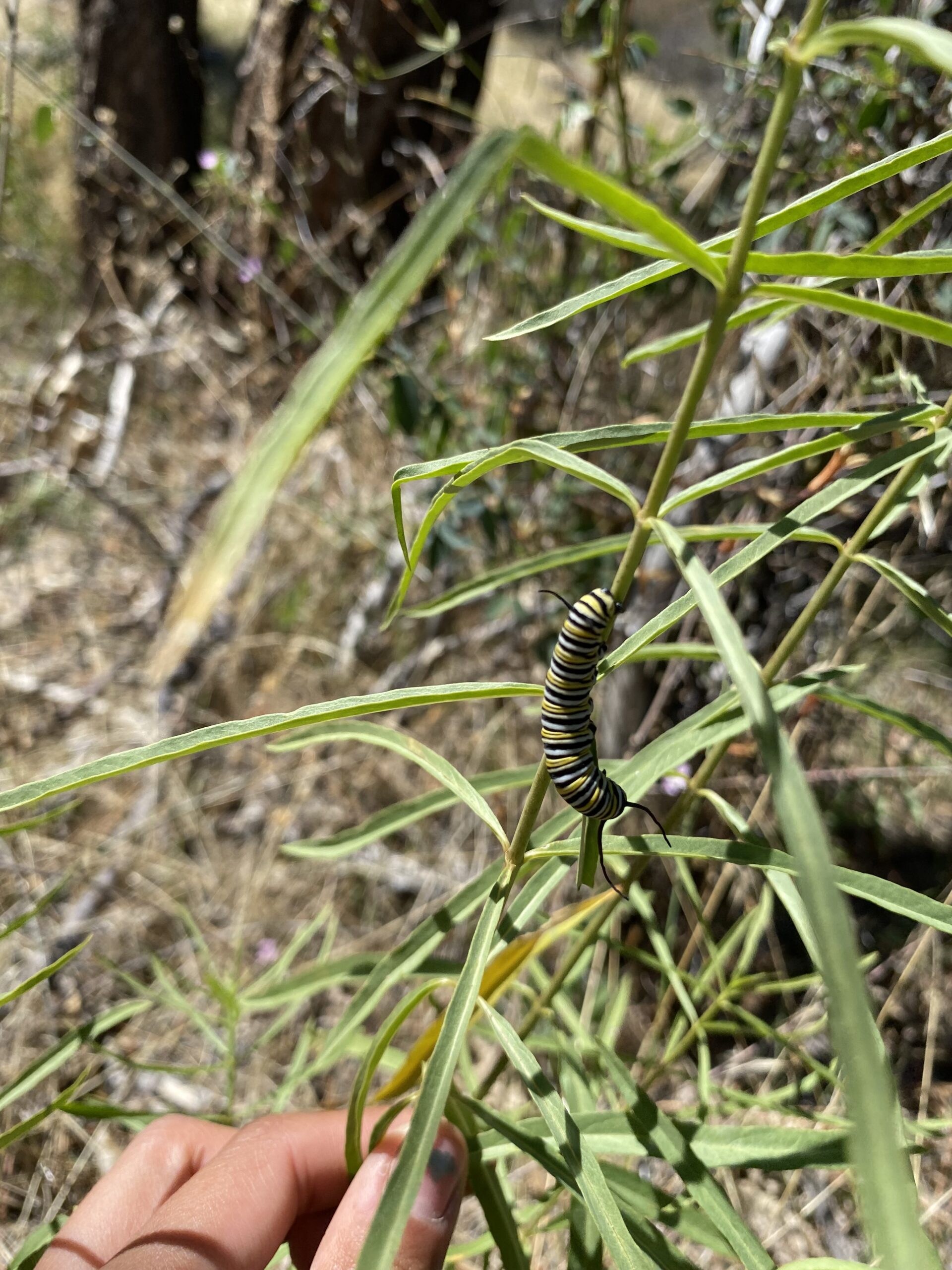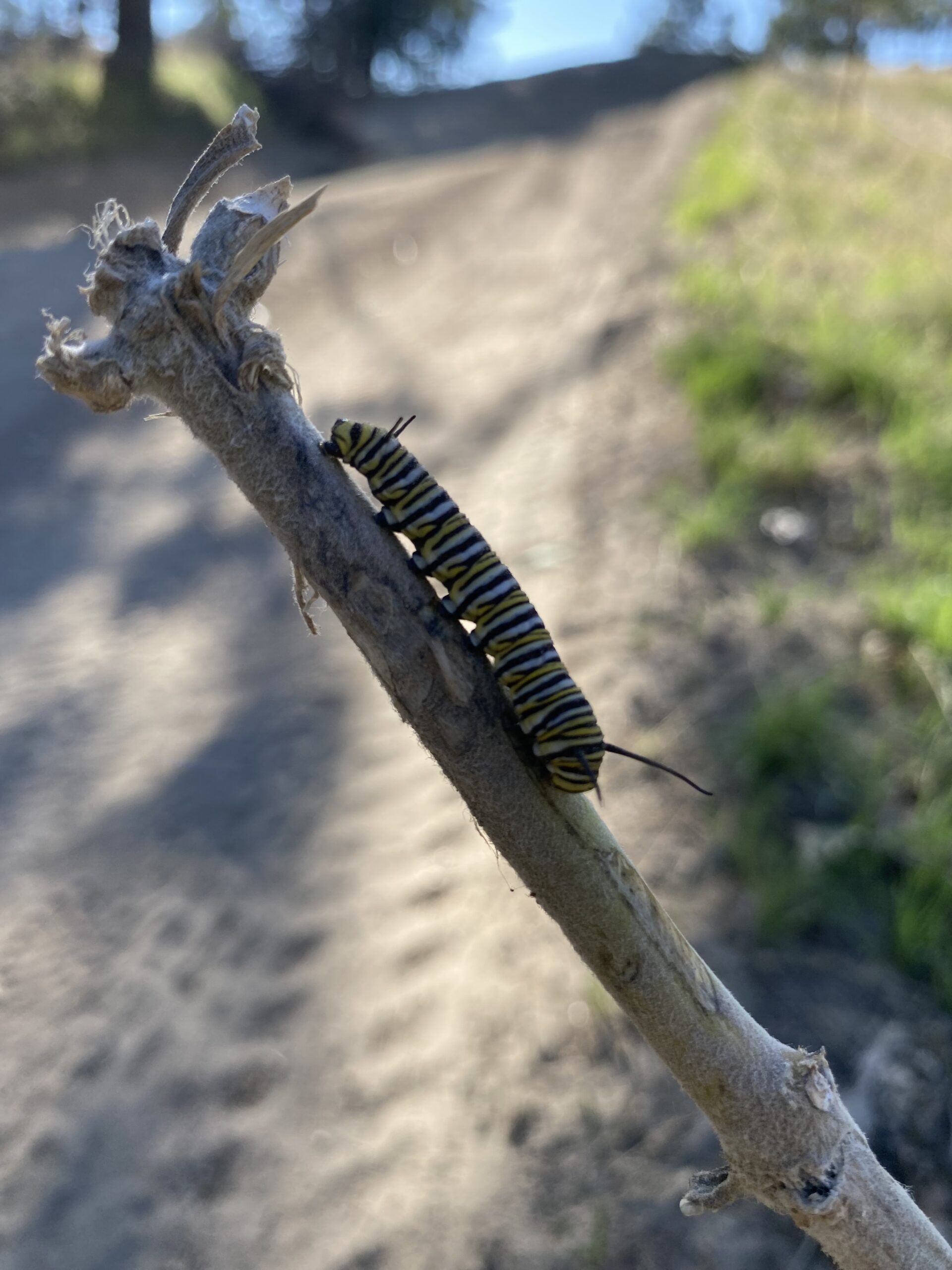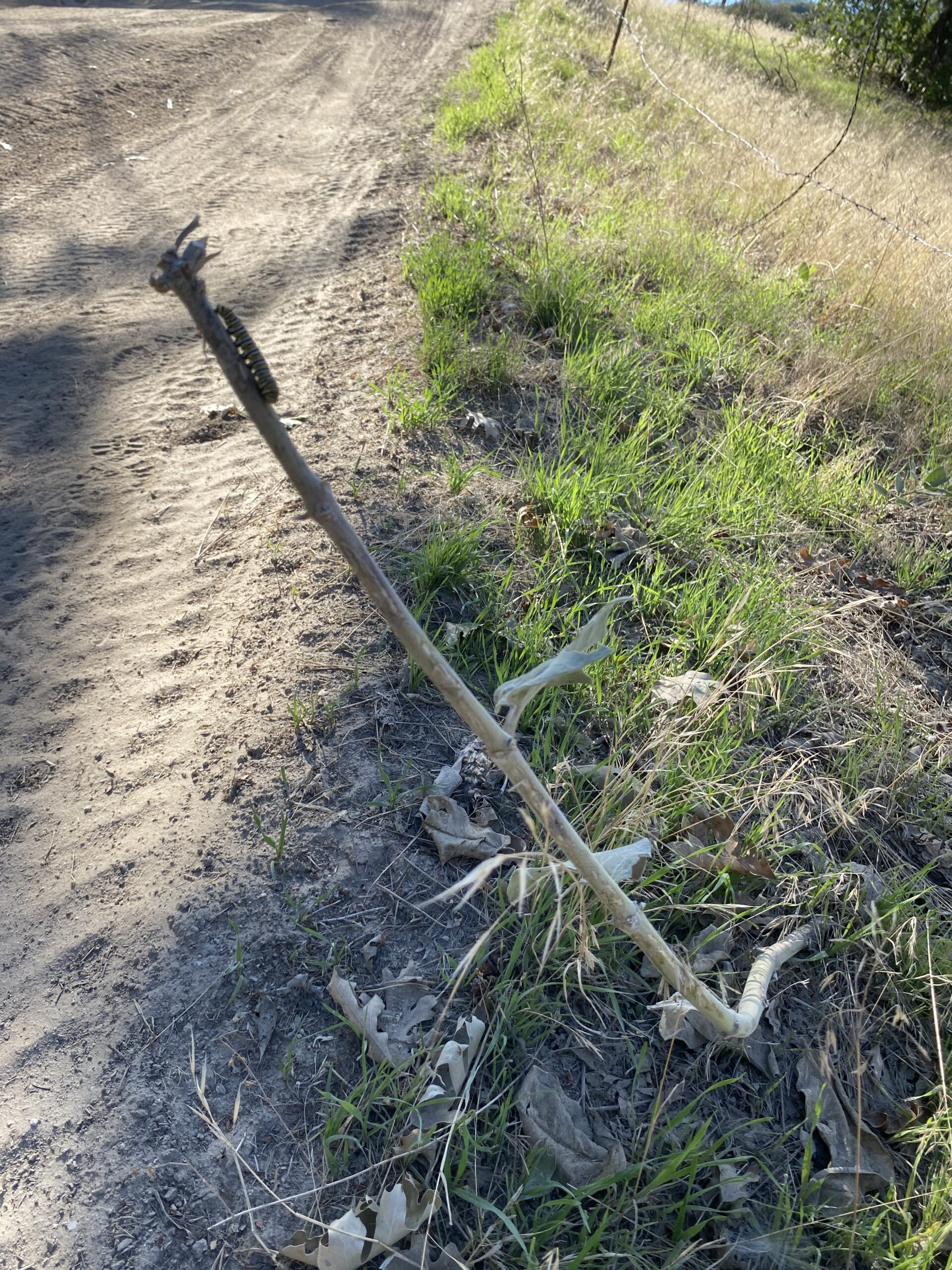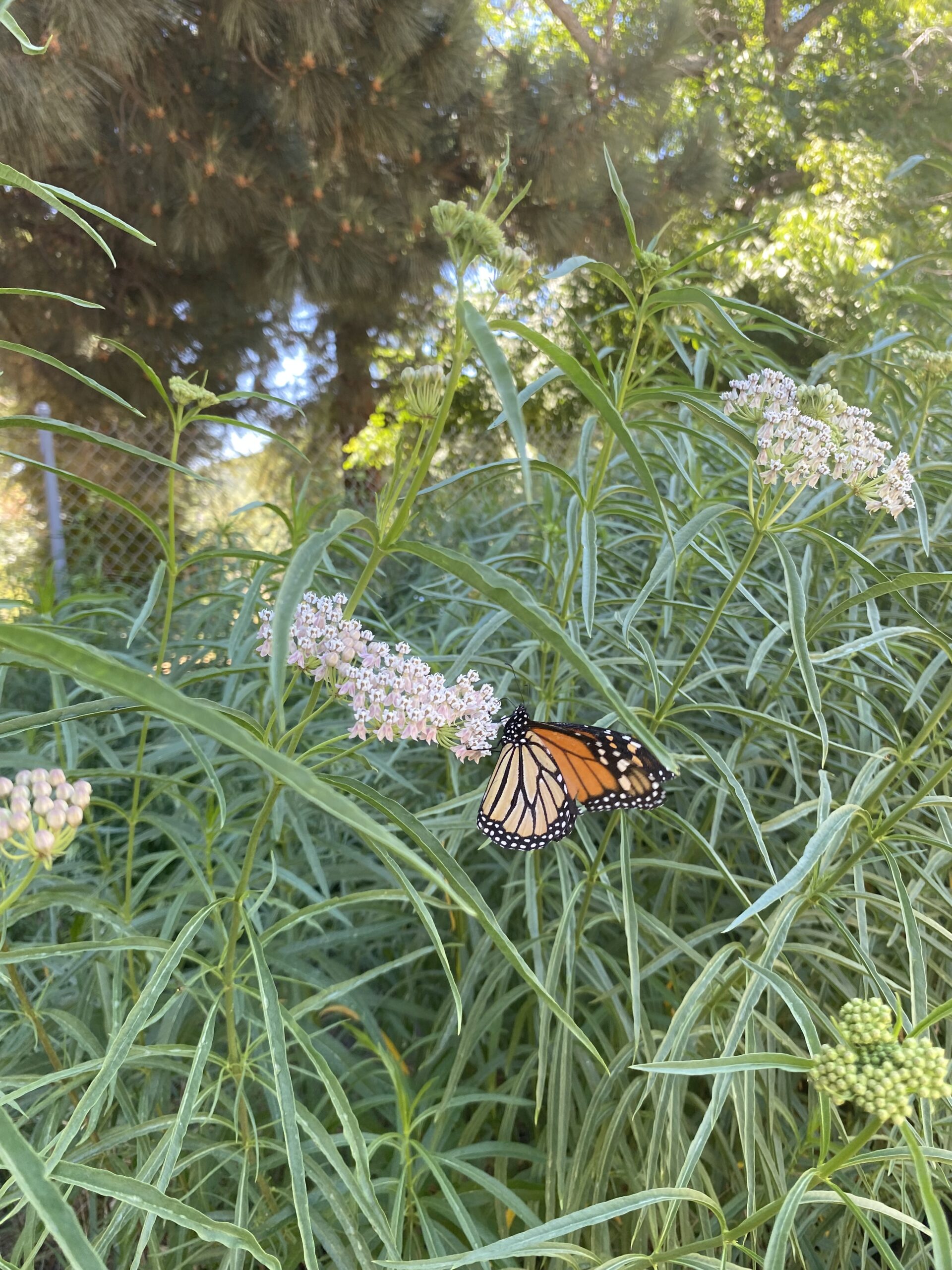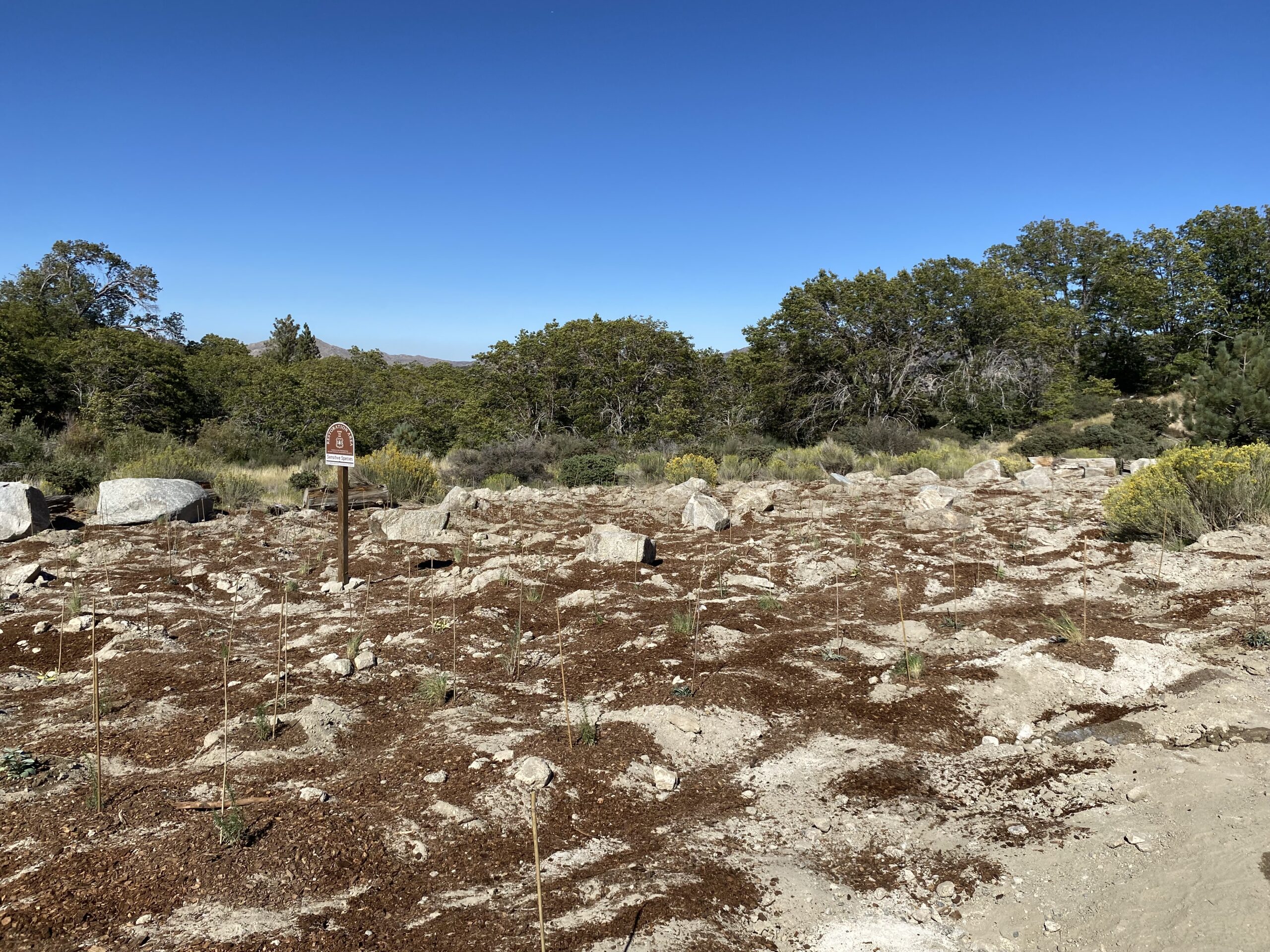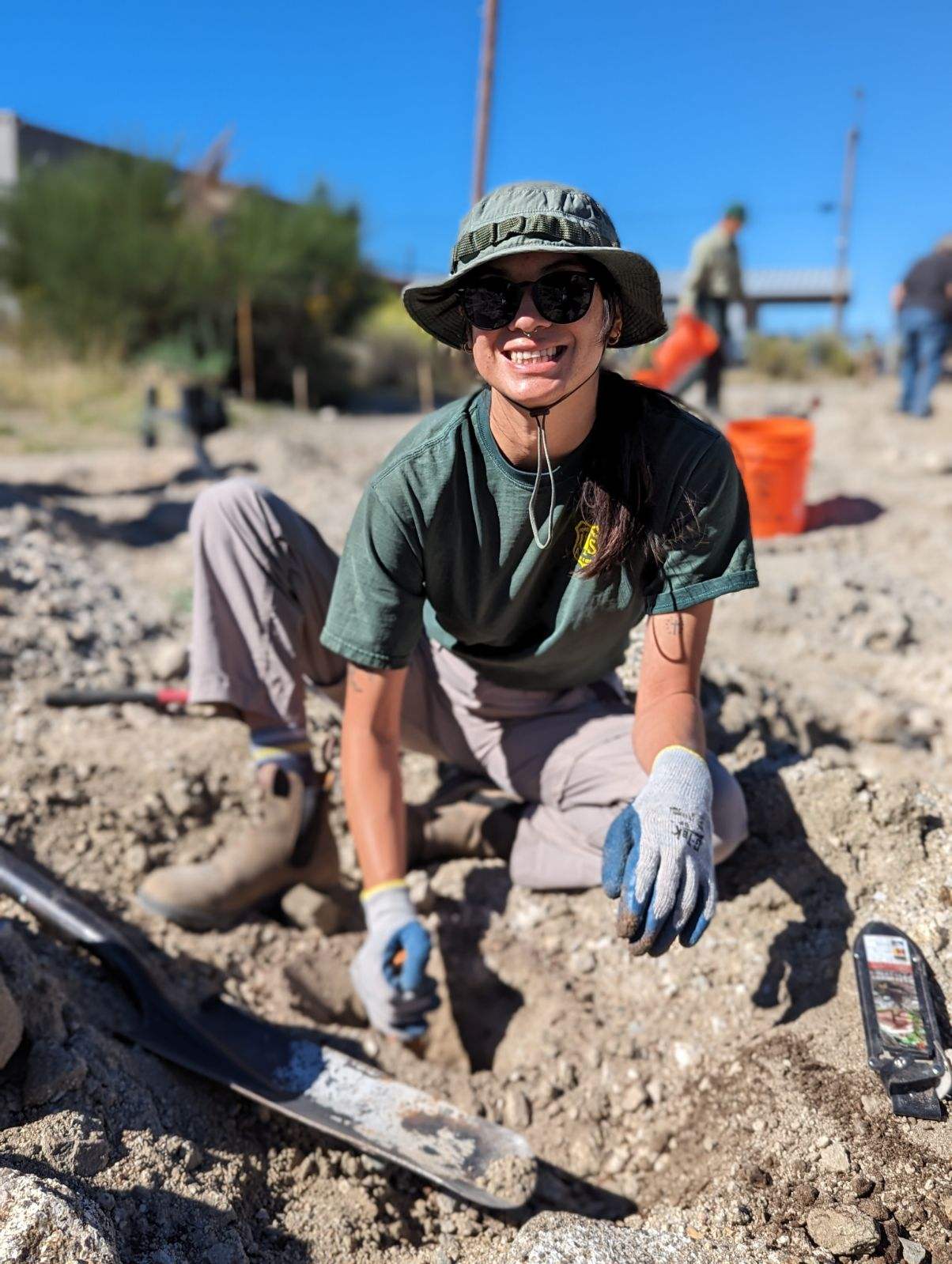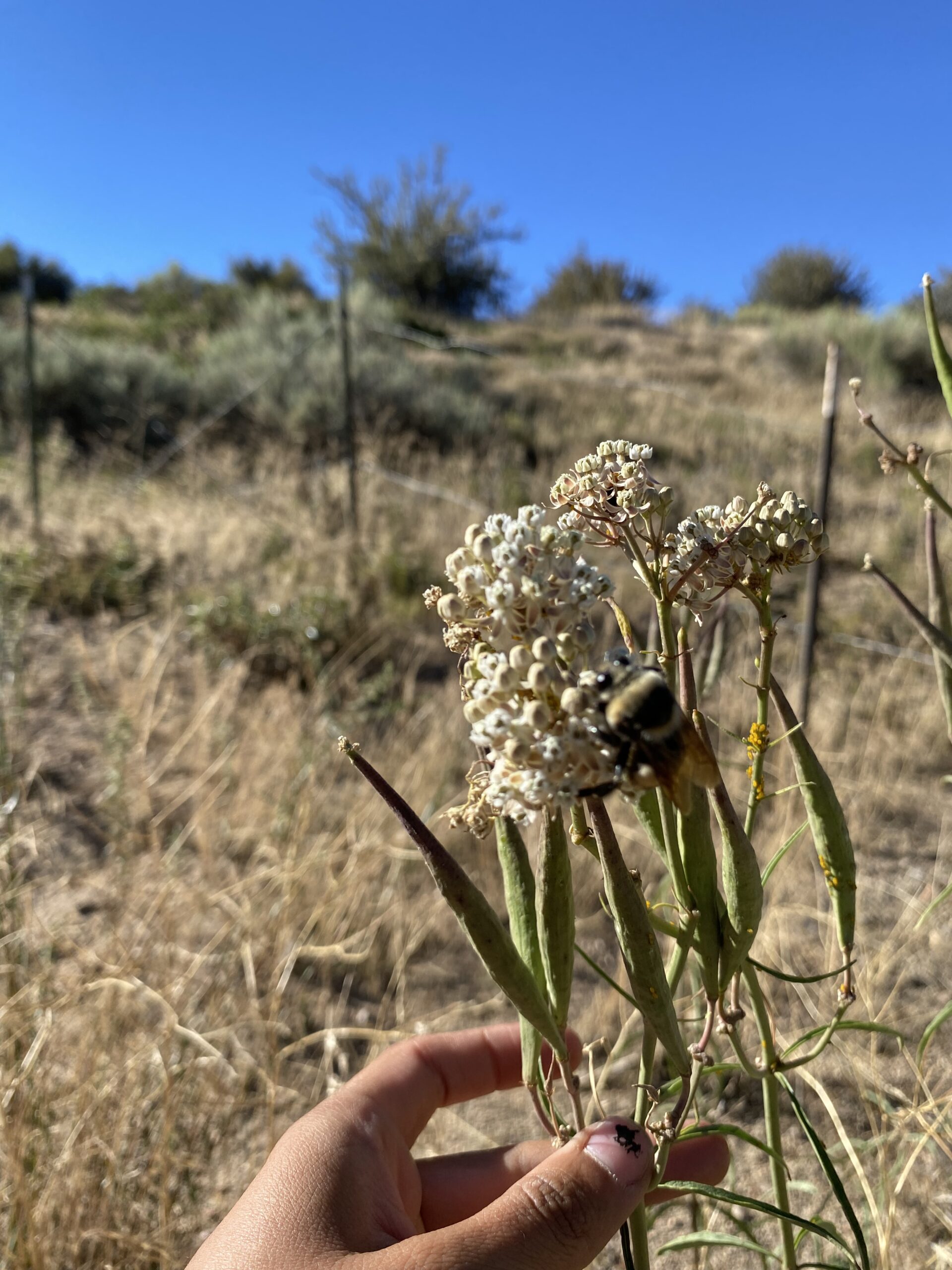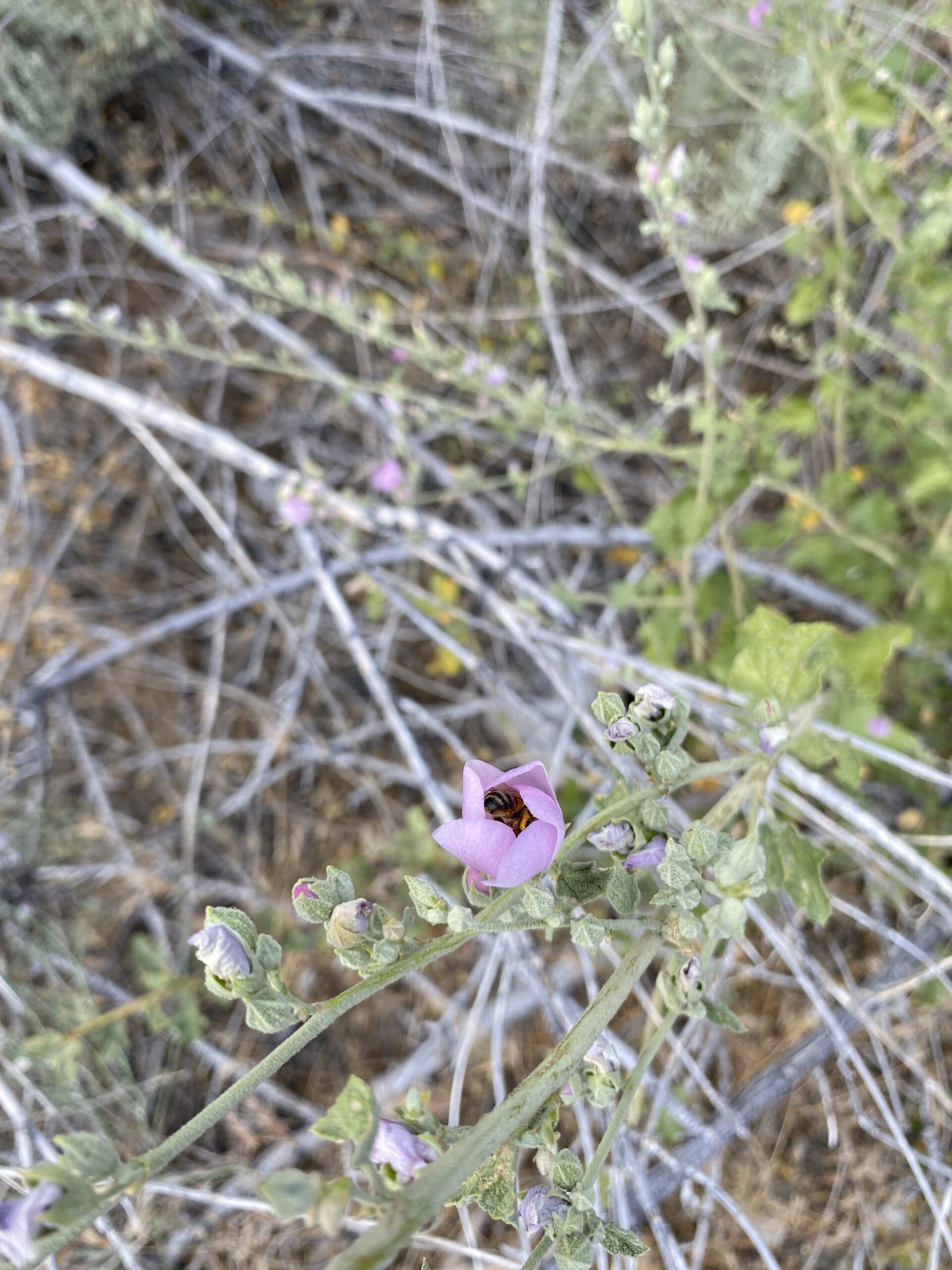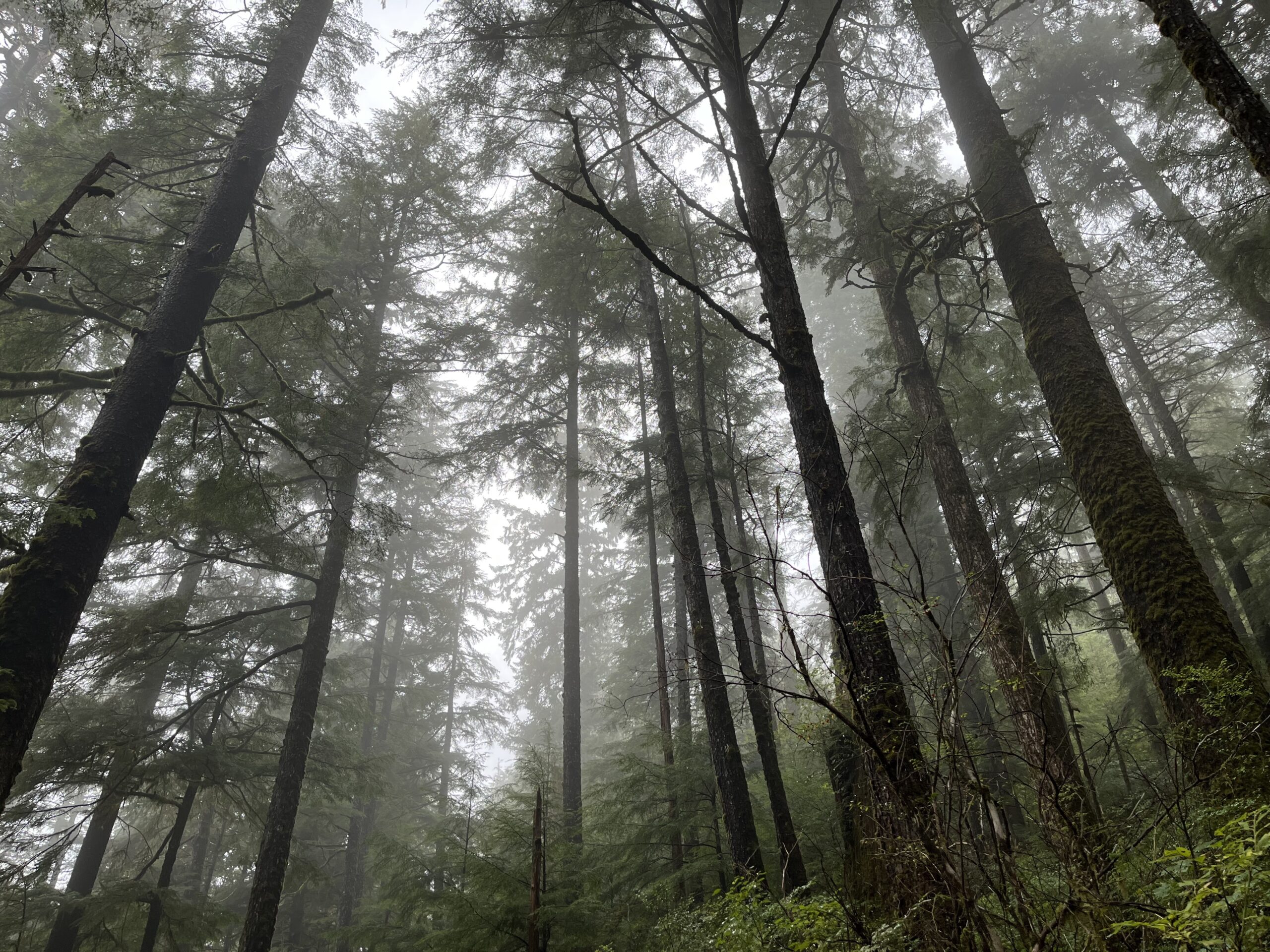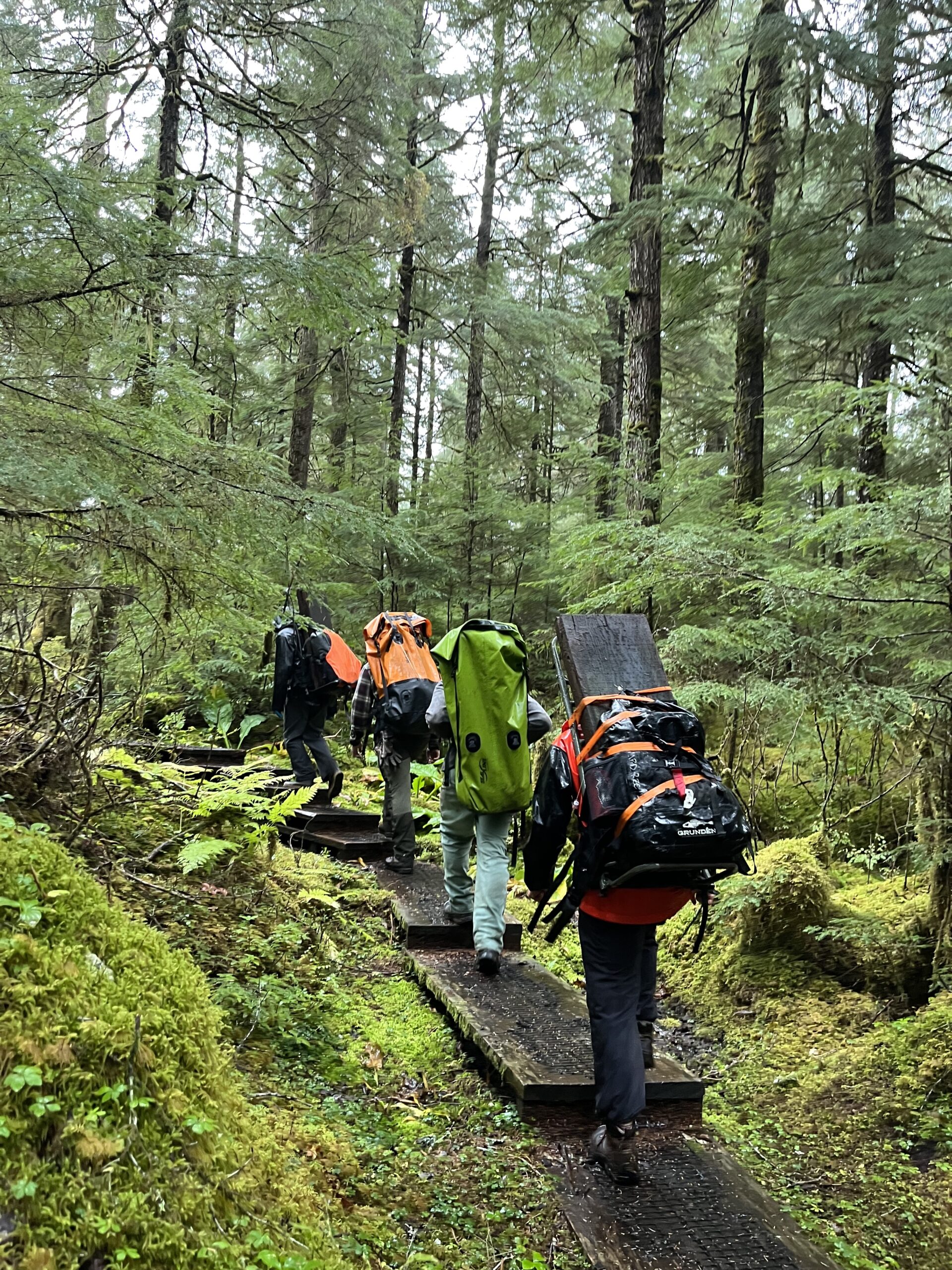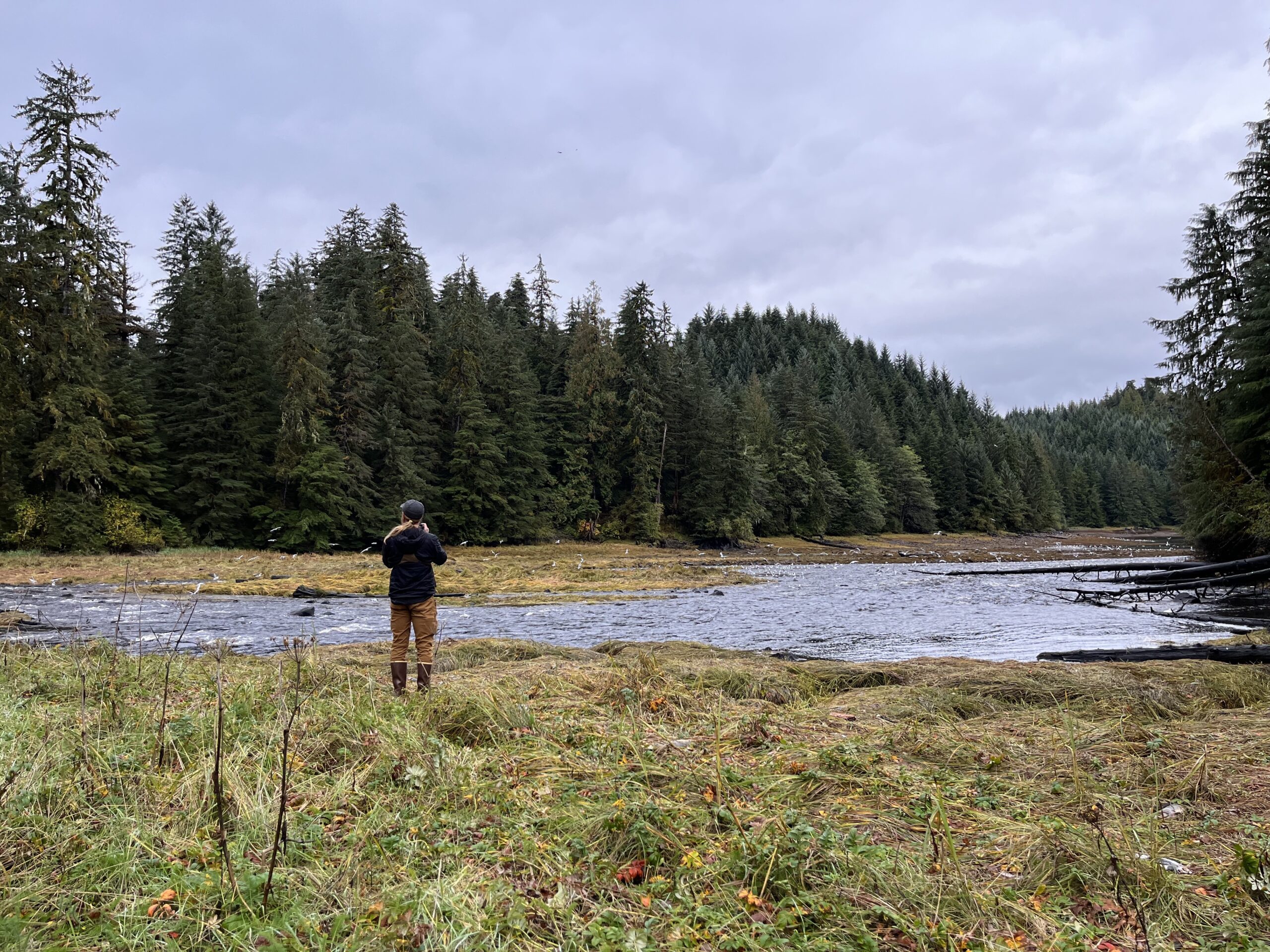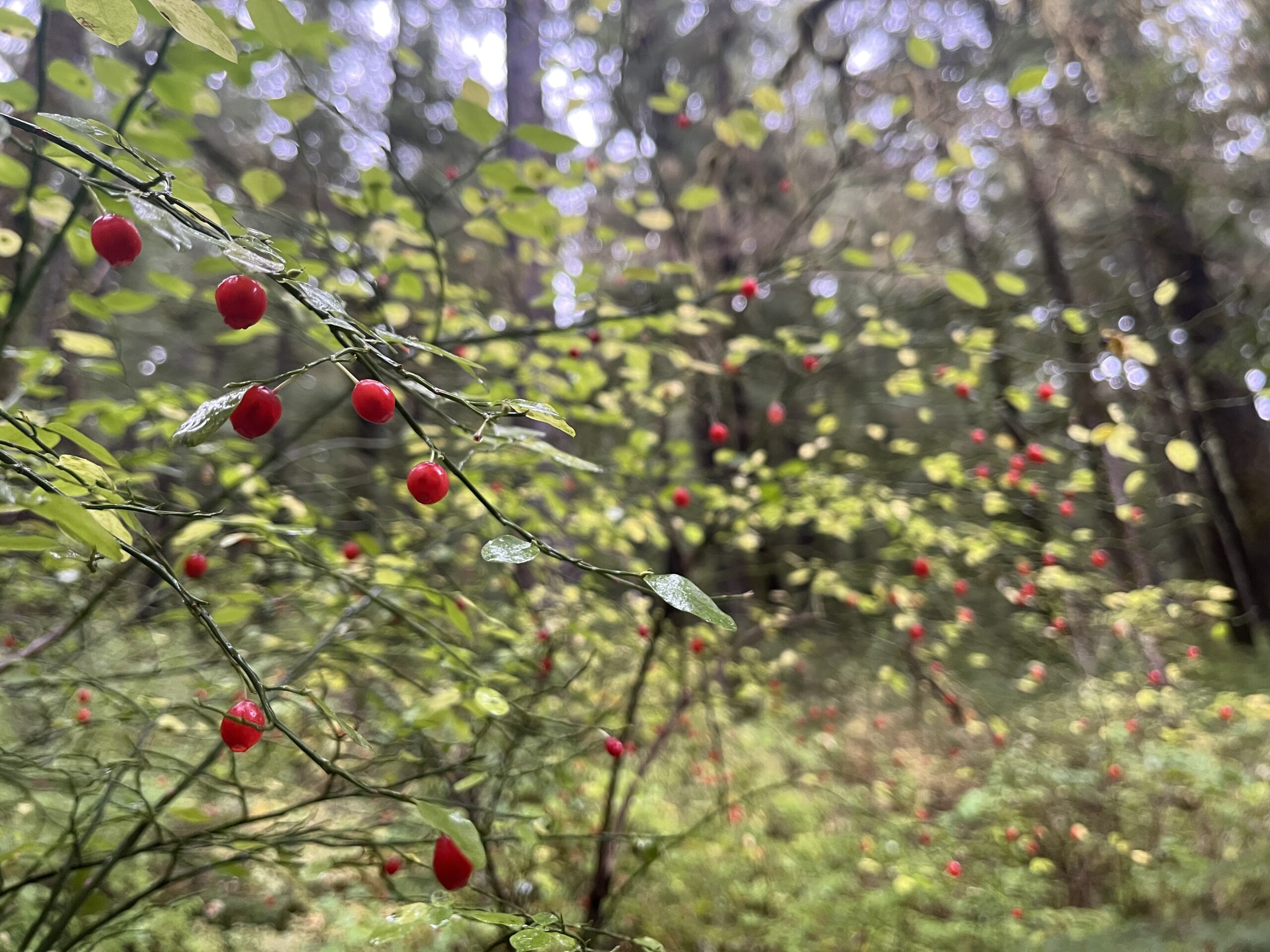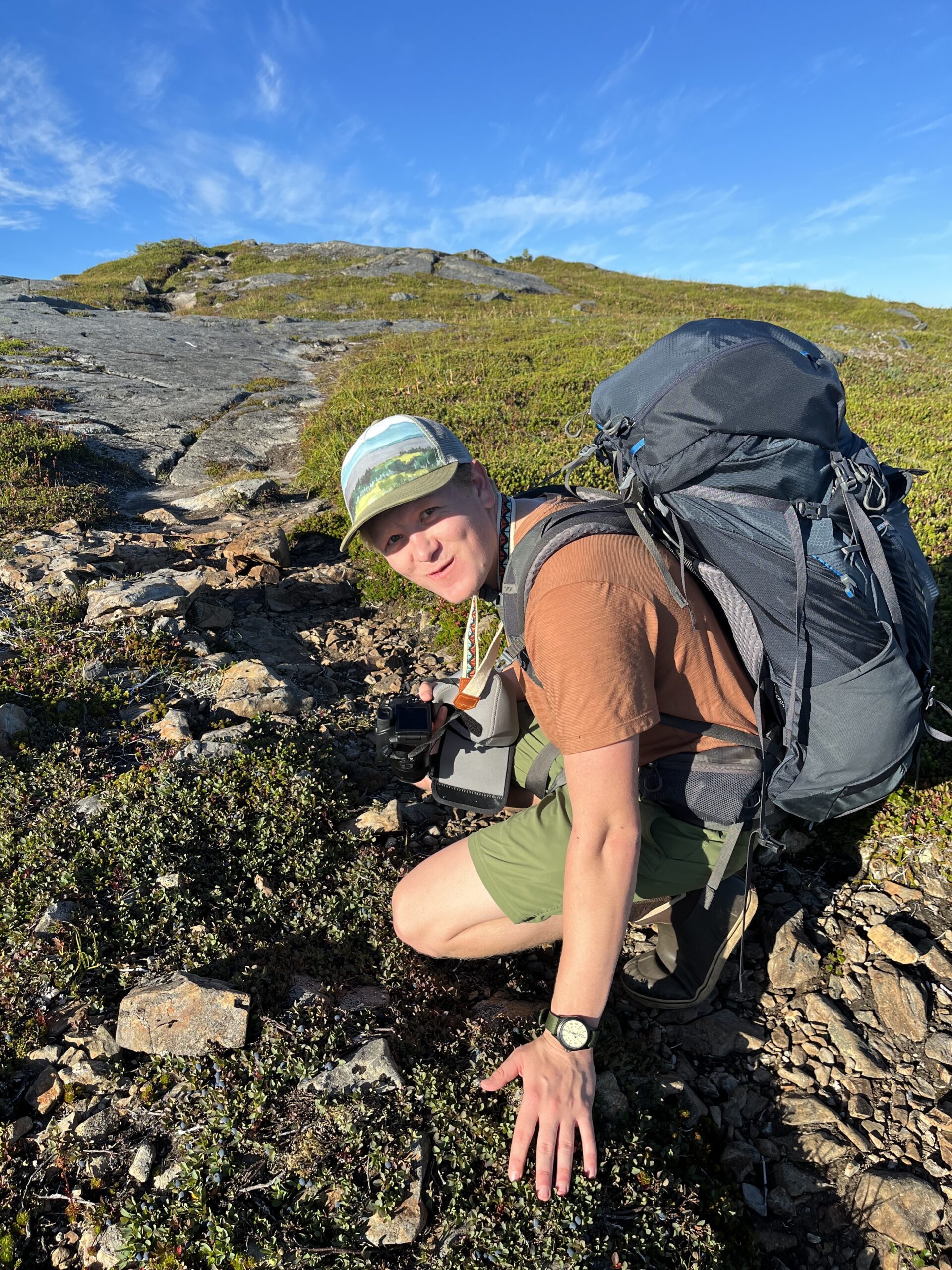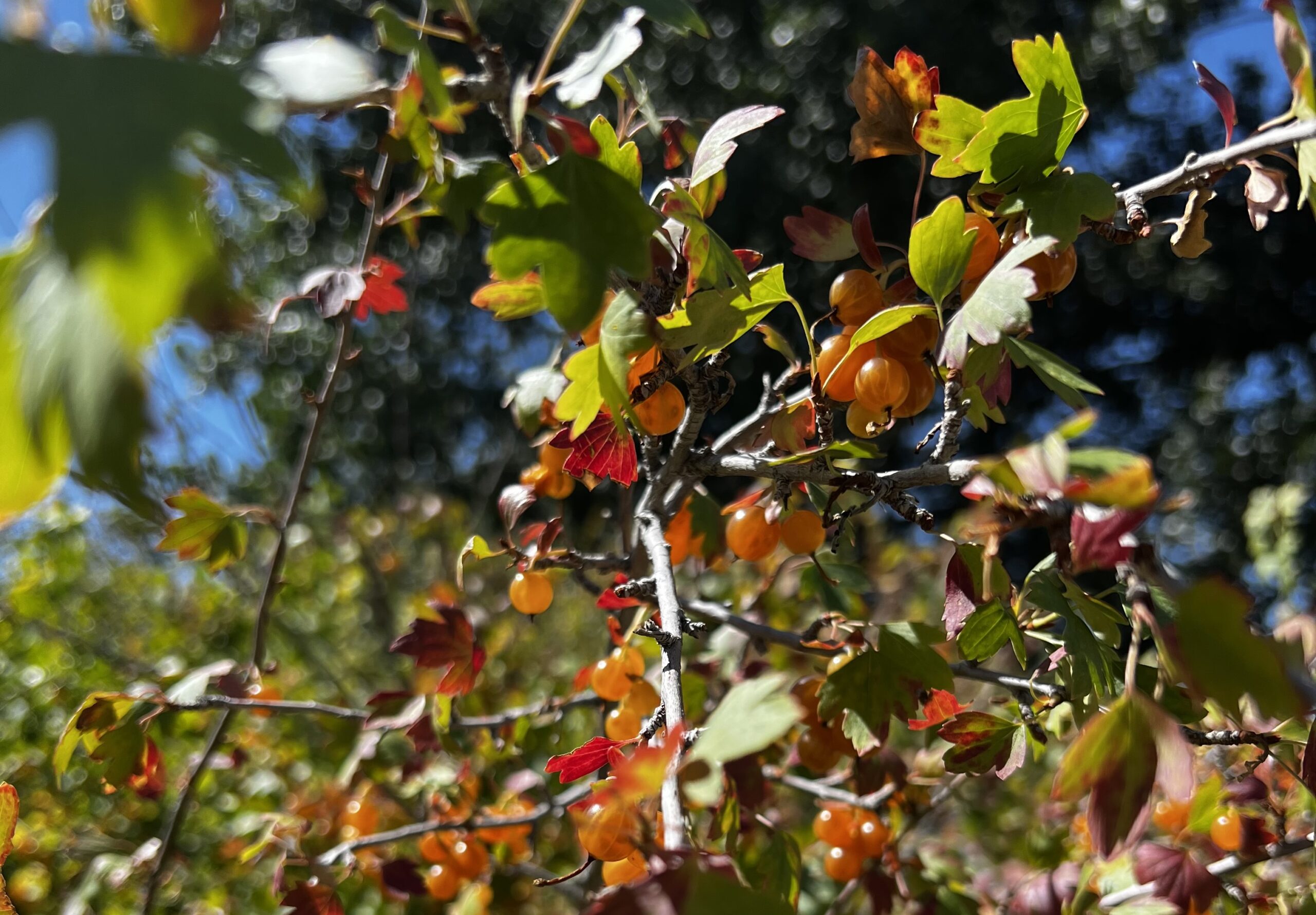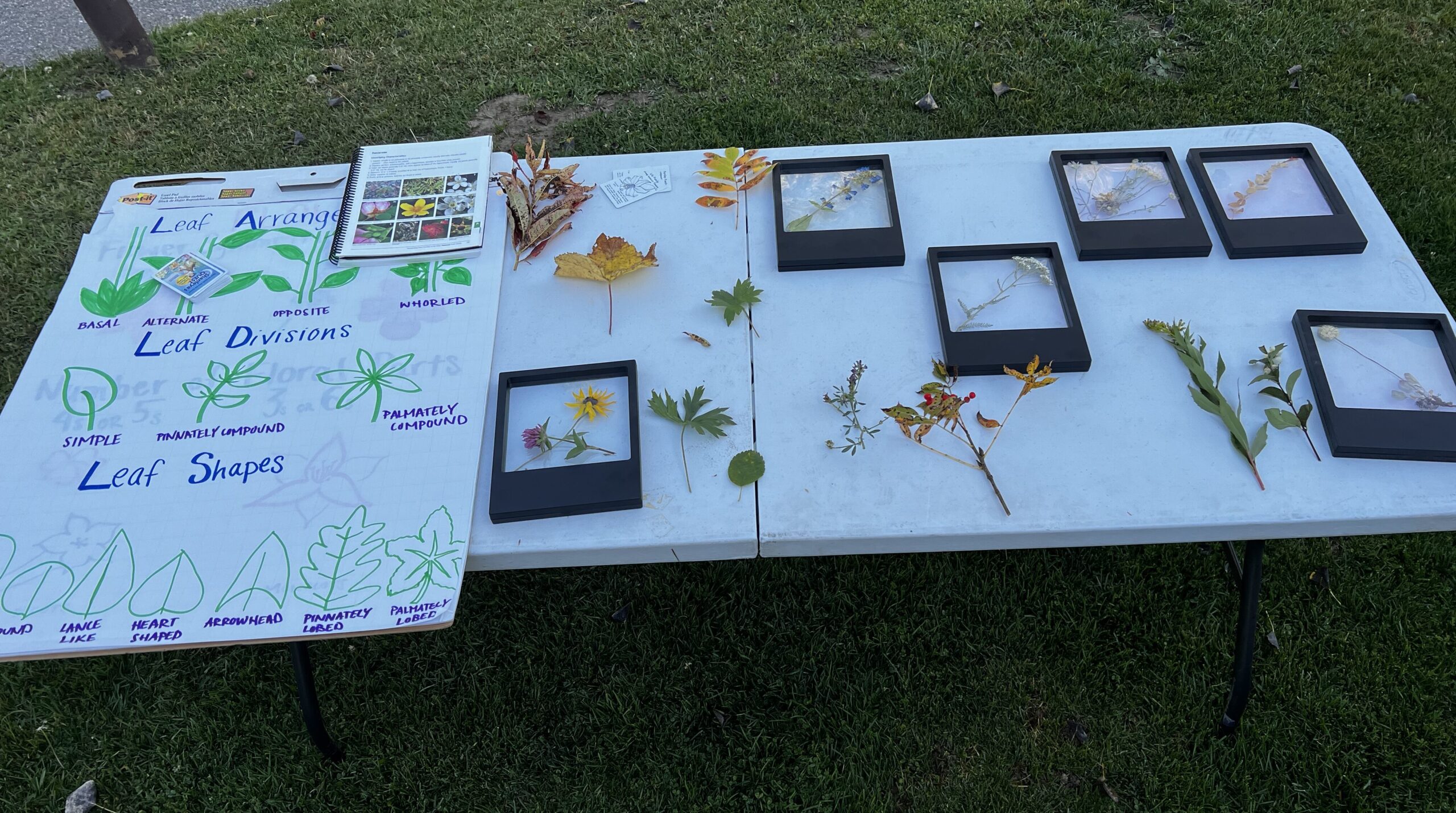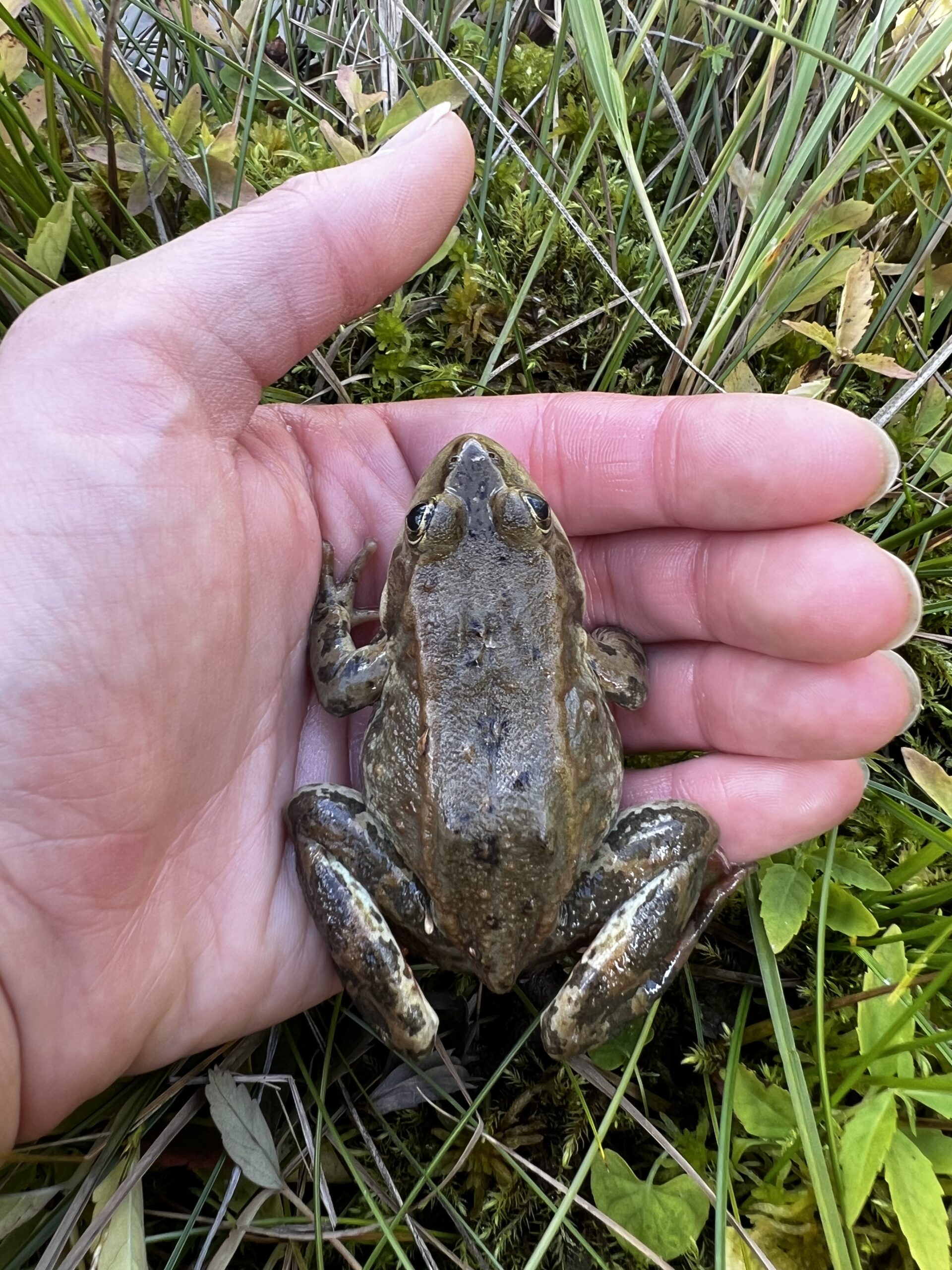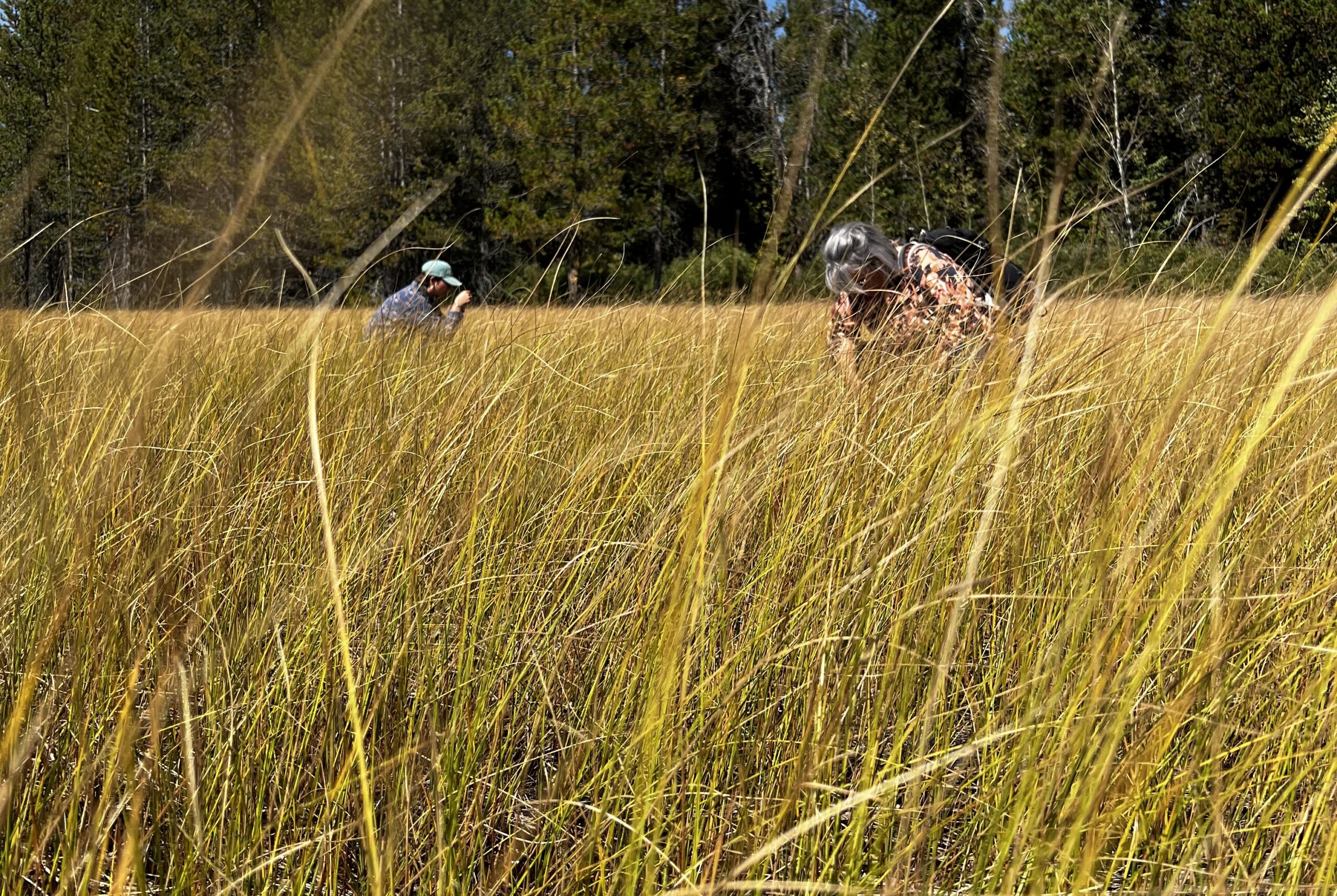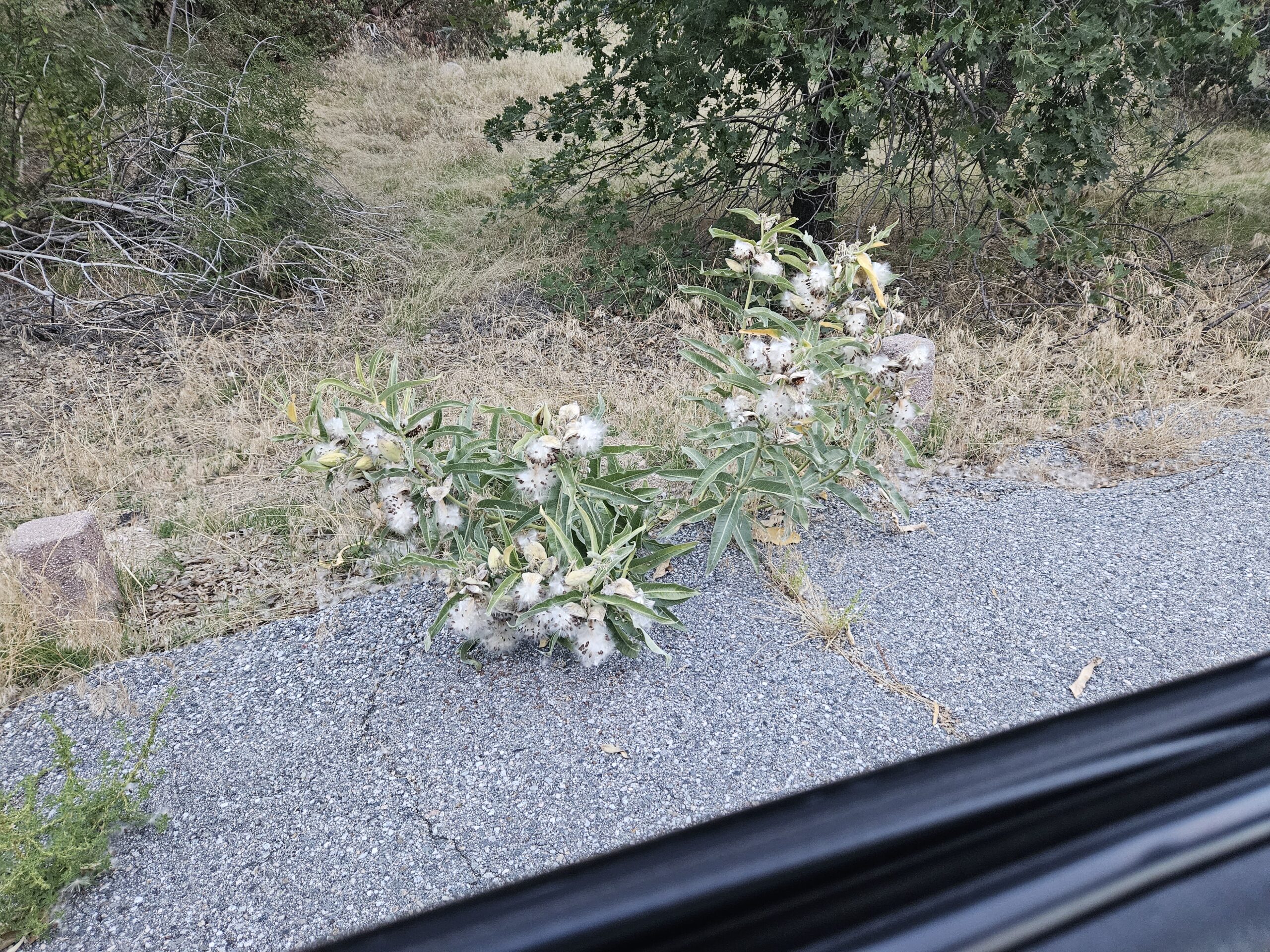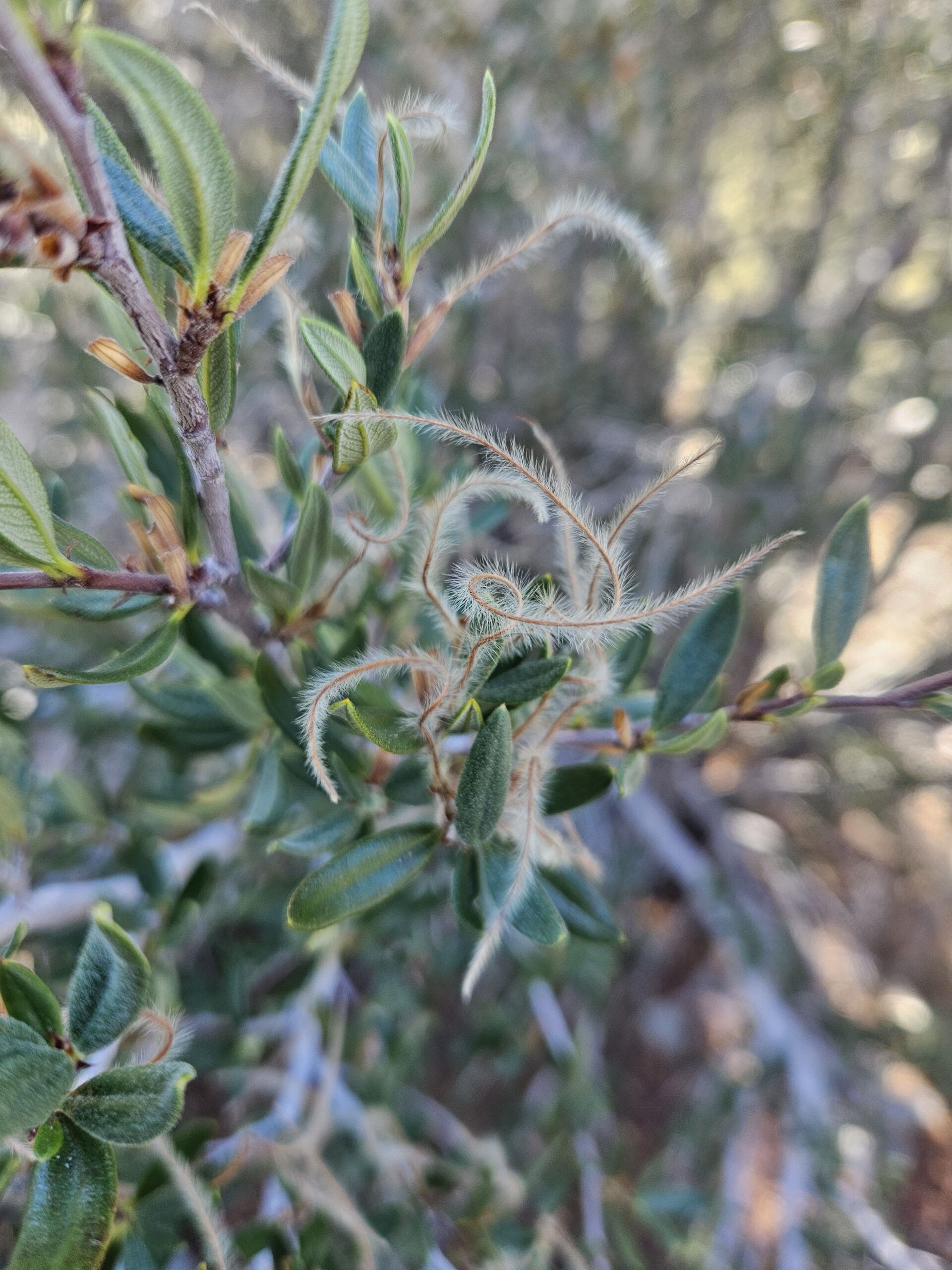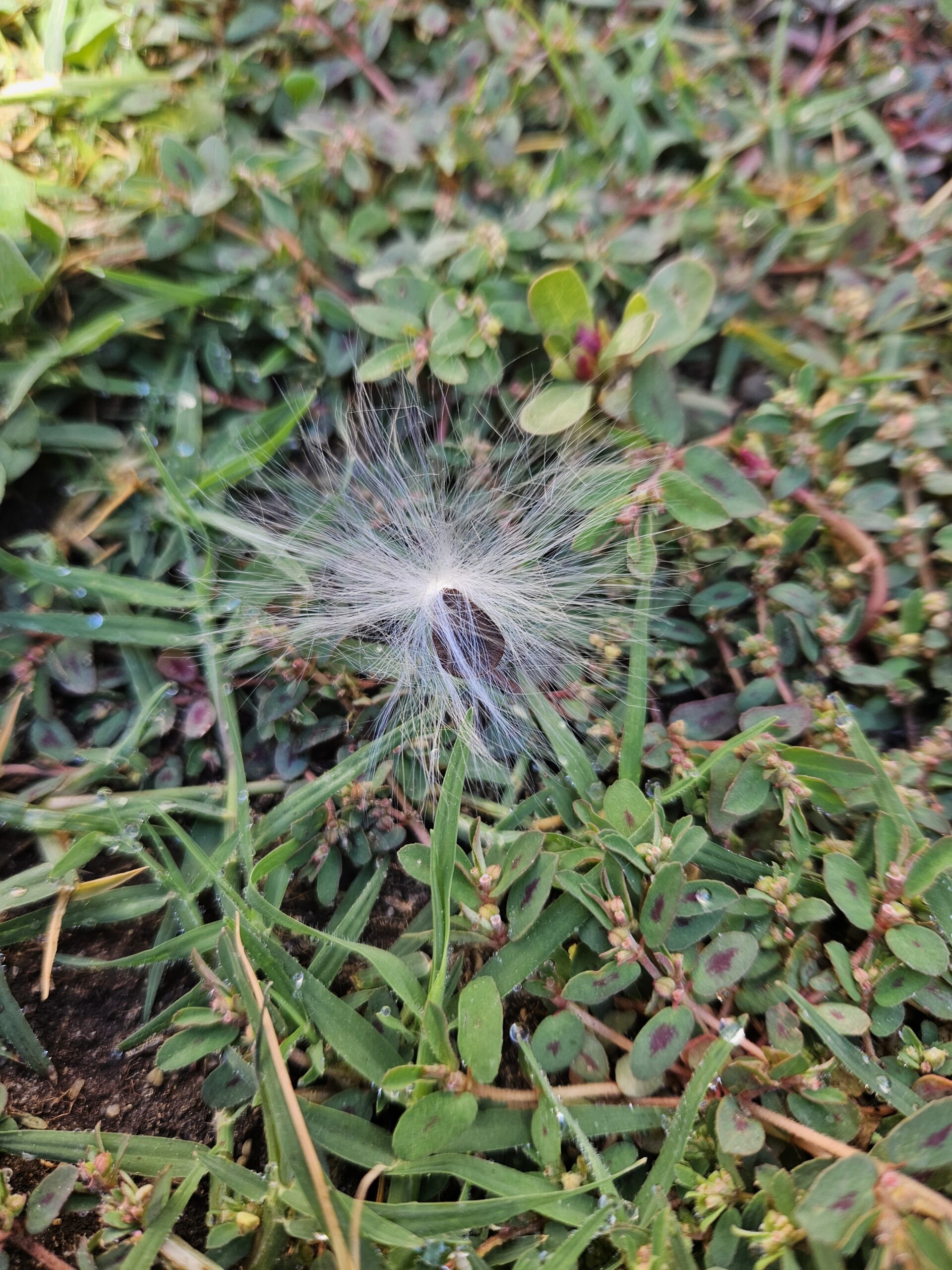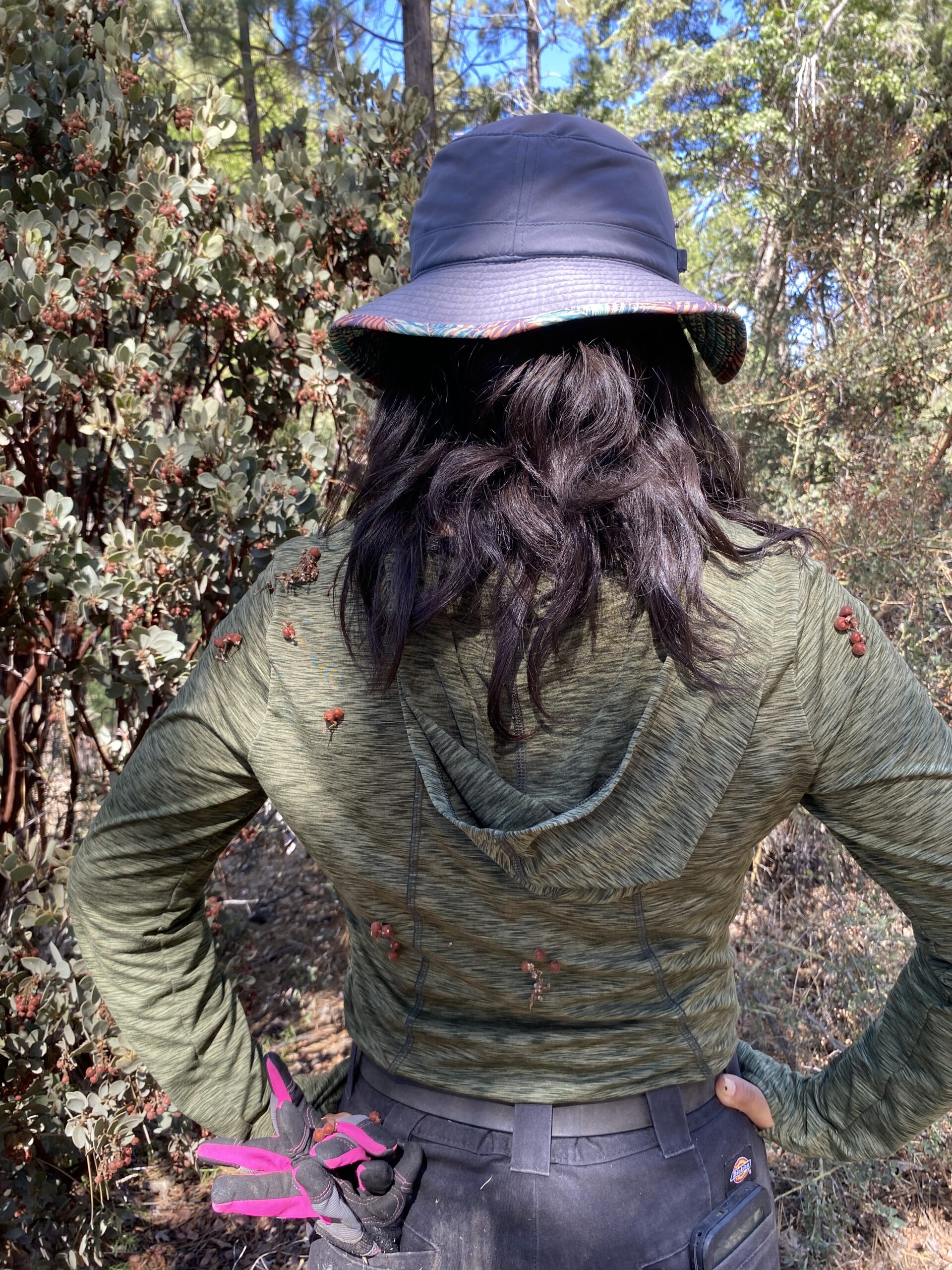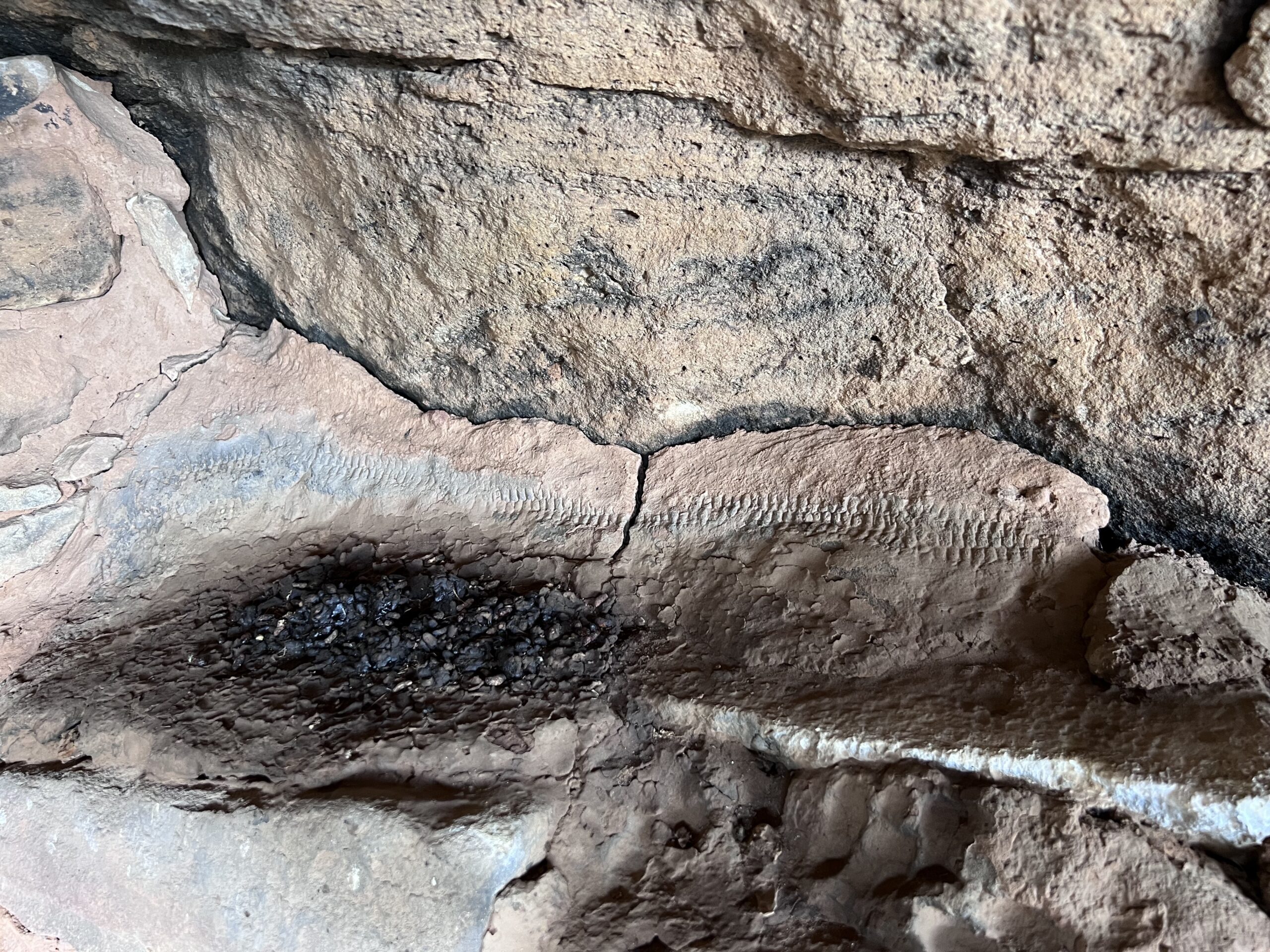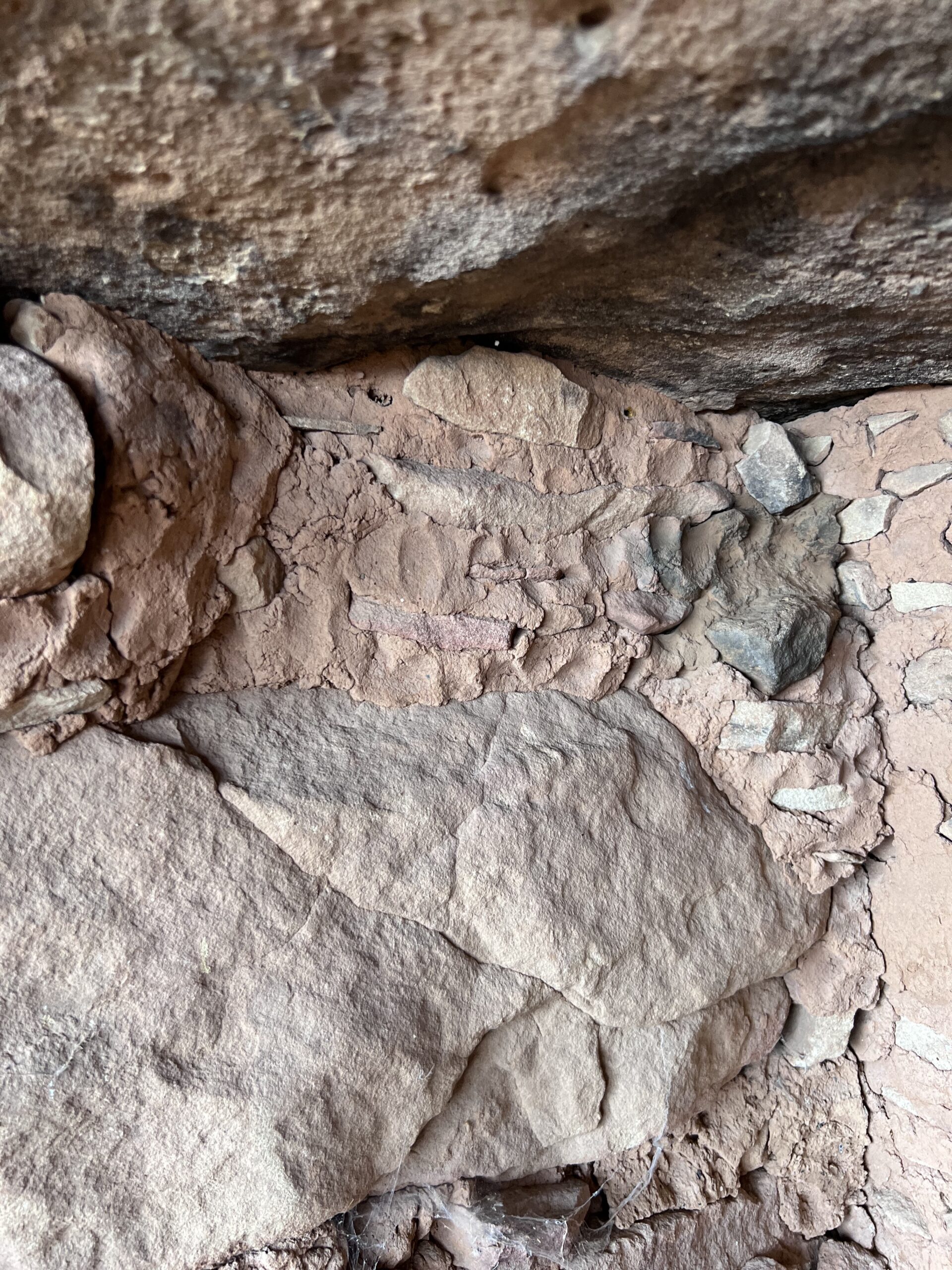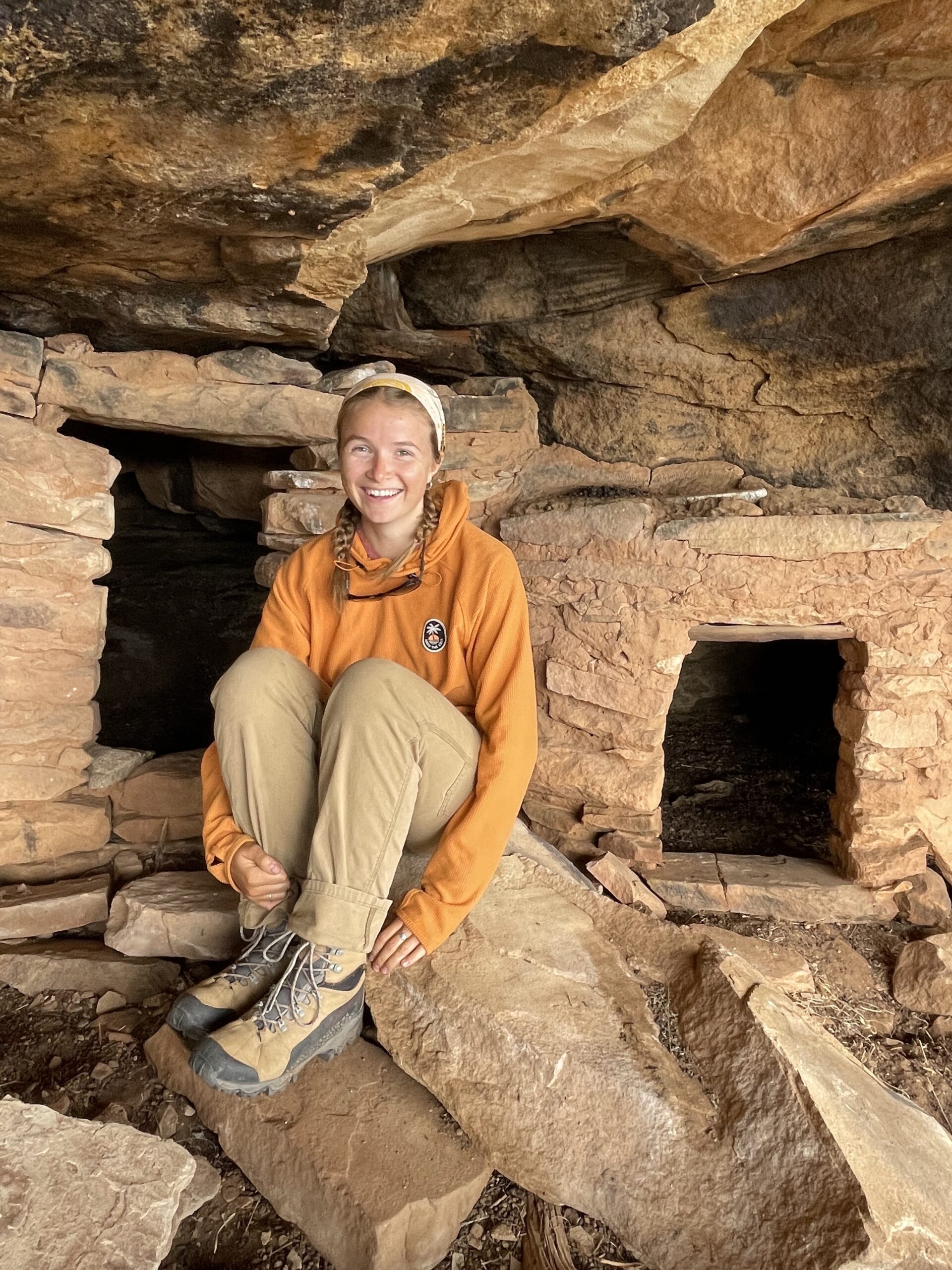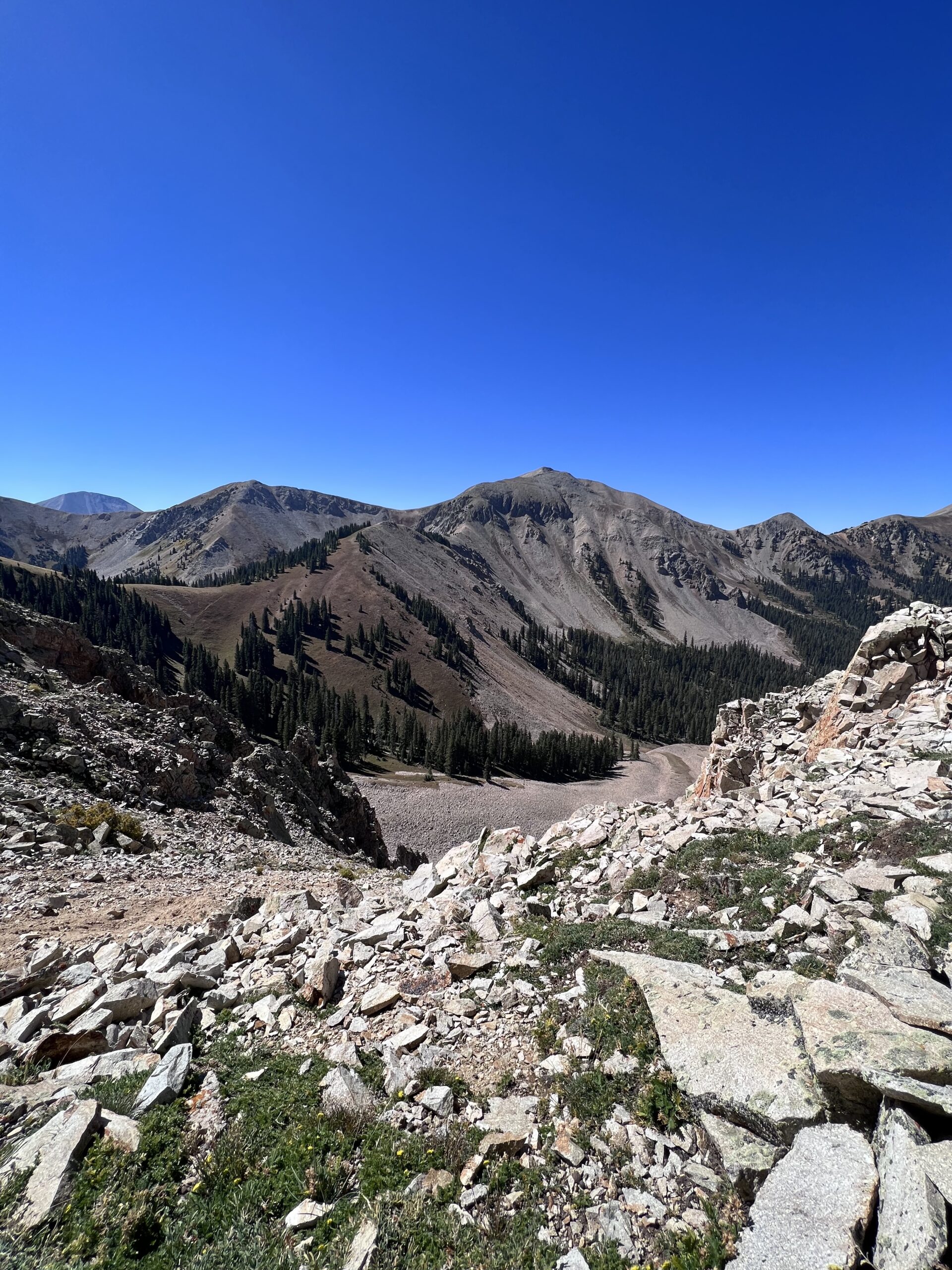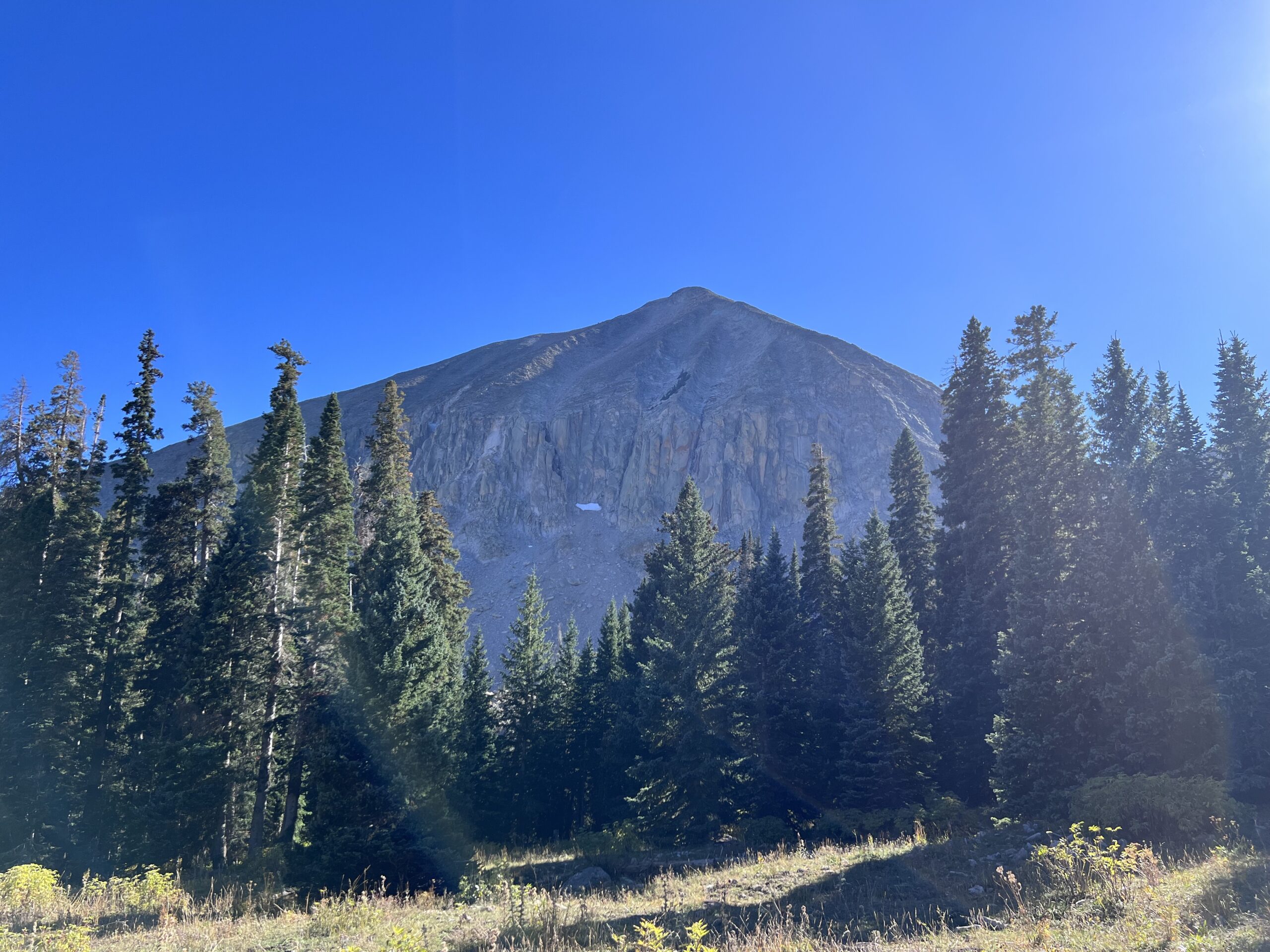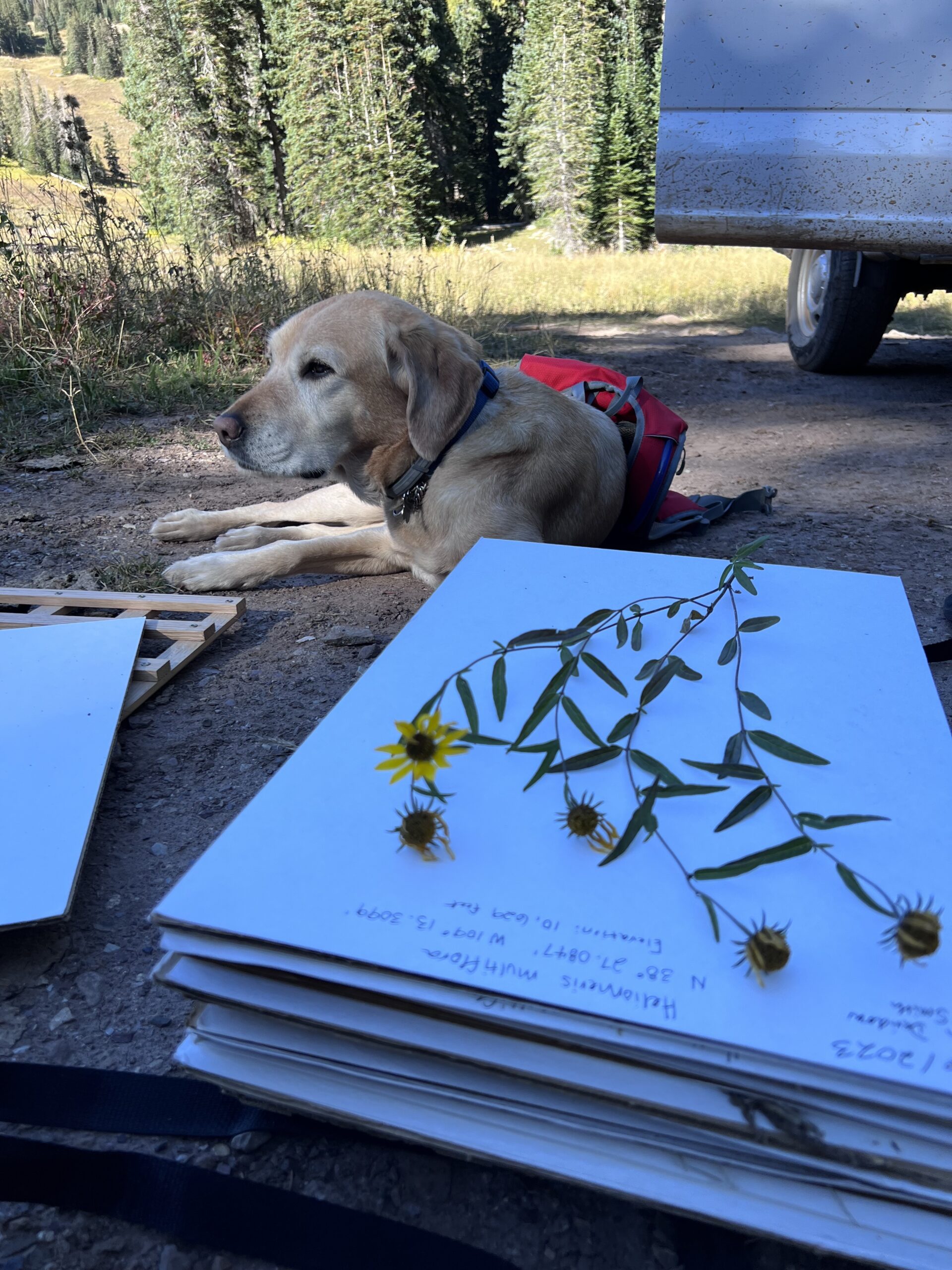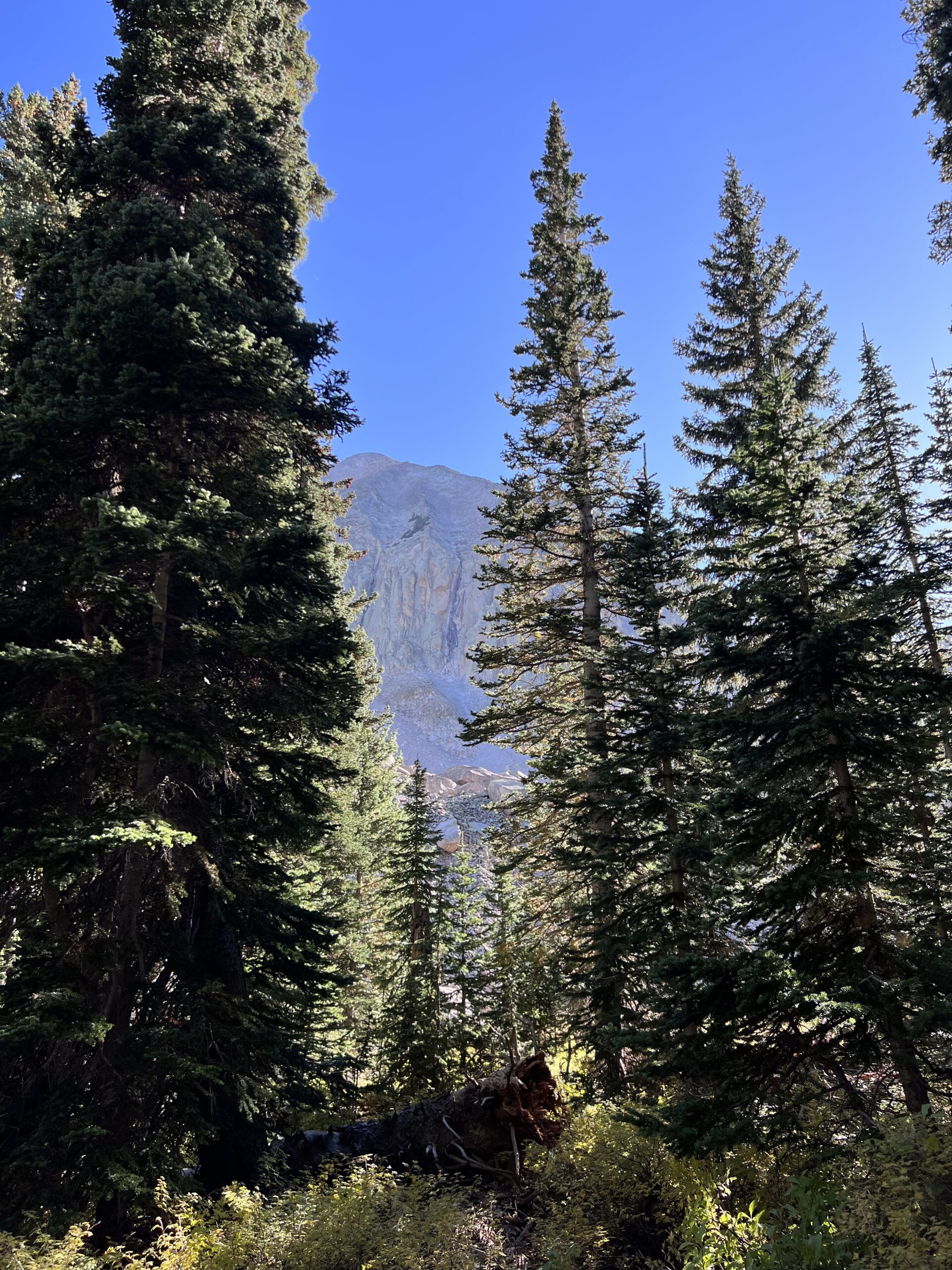The high desert sun over the Payette has receded into misty mornings and many a rainy day, and the larches and aspens are turning to spires of gold among the evergreens. The past month has been a bit of a choose-your-own-adventure story; the credits have begun to roll for the main storyline of seed collecting, so we’ve had some time to work with a handful of other crews on a smattering of side quests.
We started off the month with a collection of red-osier dogwood seeds (Cornus sericea) that we suggested as a good way to learn to collect not only tree seeds but also fleshy fruit. The question of the hour then became: how do we get these out of the little white berries they grow inside? The answer, it turns out, was to dump them into a 5-gallon bucket and stomp them like wine grapes. They feel so, so weird between your toes – would not recommend! But after laying them in the sun for a few days to dry, we ended up with a rather bulky bag of about 40,000 seeds. Not too bad for two hours’ worth of collecting.
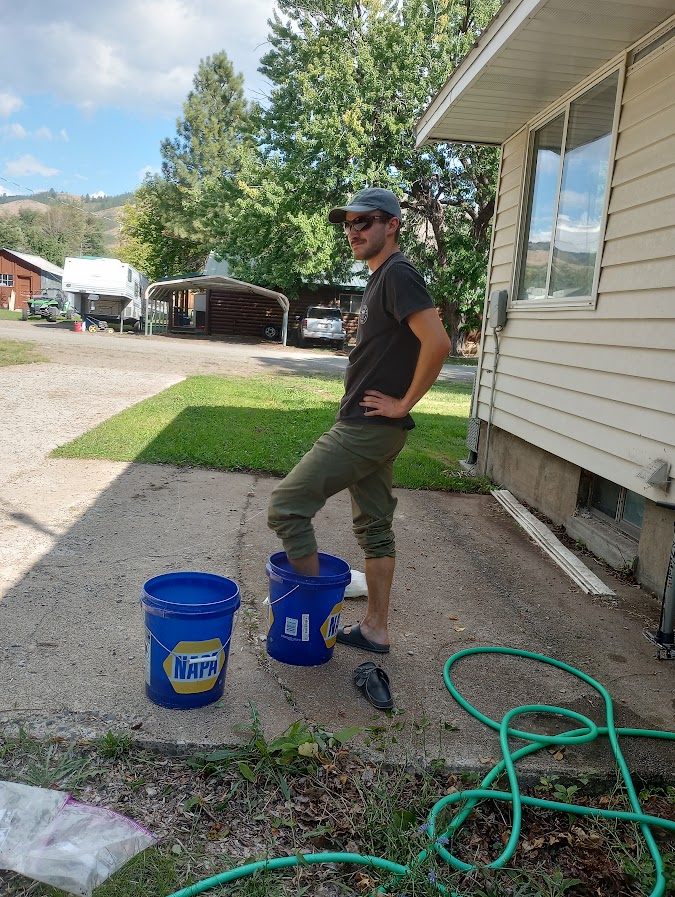
After this rather bizarre episode, we tagged along with a wildlife biologist to retrieve game cameras on the farthest-flung reaches of the forest out by Hells Canyon. We returned with a camera roll full of elk, fishers, and bears, an incredible panoramic view of America’s deepest river gorge, and a new population of a rare bitterroot flower. We spent the next week or two wrapping up collections of roses, alders and daisies before Dan took a week to visit Great Basin. I stayed behind to finish some office work and map streams in a timber sale with our hydrology crew, and then it was my turn to take a week off and drive through the gorgeous Idaho panhandle.
I spent most of my week’s vacation touring Coeur d’Alene, a quaint little lakeside city where the rain and coffee abound this time of year – and, it turns out, some large furry beasts. On the far shore of Coeur d’Alene lake, a campground is tucked away in the pines, accessible only by kayaking across the water. I paddled an evening’s worth of gear across, set up a tent, and was about to make supper and go to bed when I heard the sounds of heavy animal breaths just into the woods. Shining my flashlight in their direction revealed – two large glowing eyes staring back at me, about three feet off the ground. It may be worth mentioning at this point that Coeur d’Alene is on the edge of grizzly country. I packed my tent back into my kayak and muscled the boat back across the lake with a furious intensity that would make any Viking captain proud.
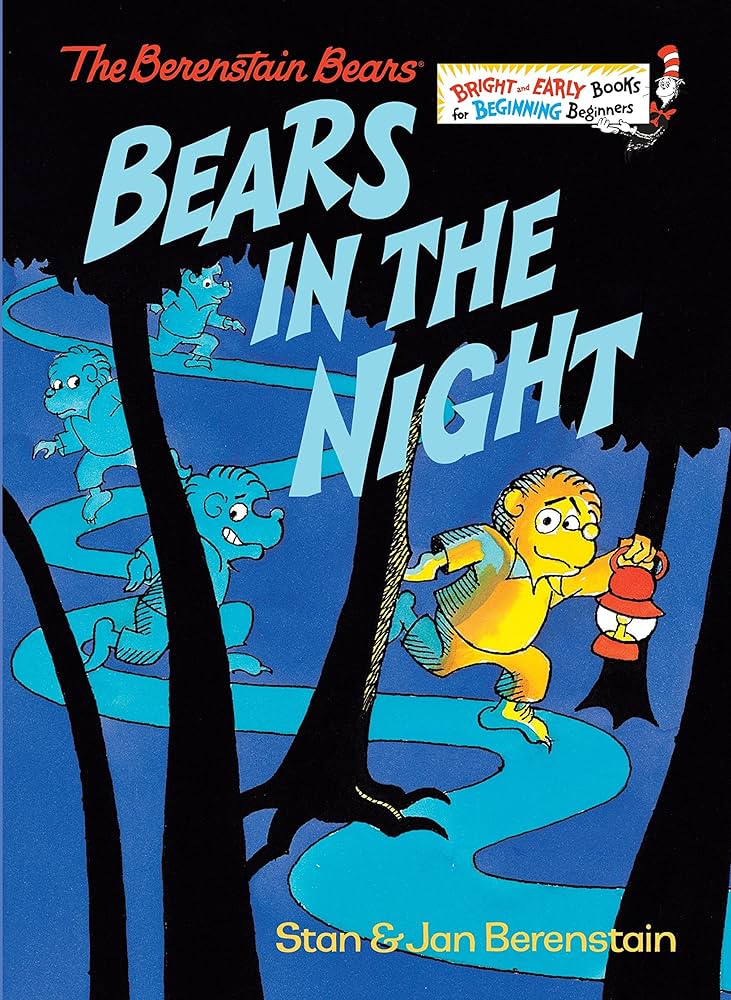
After this rather startling misadventure, I spent the rest of the week exploring the town, fly-fishing, hiking to waterfalls in the Selkirk Mountains, and generally having the best time of the summer. Not to mention all the other off-the-cuff day trips we’ve taken: I finally caught my first trout of the season in the beautiful Clearwater River and went sandboarding (!) at Bruneau Dunes State Park. It seems unbelievable that the end of our time in Idaho will be here in only two more weeks, but I’ve experienced and learned so much in the past few months. I’ll be glad to be home soon, but saying adieu to the Rocky Mountains is going to be a bittersweet farewell.

